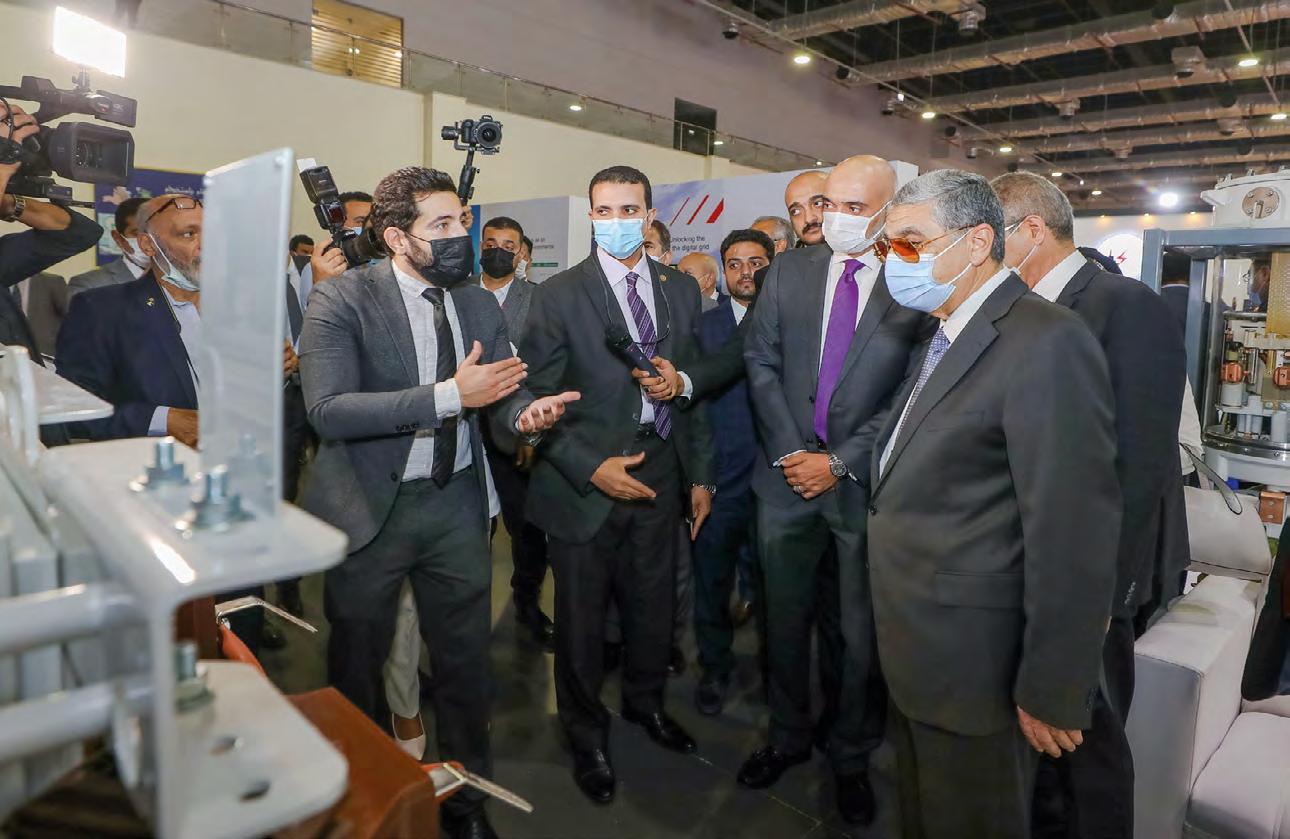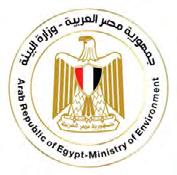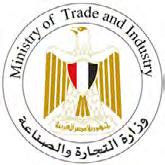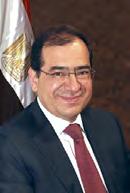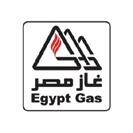

MINDS OF ENGINEERS. PIONEERS AT HEART.
Wintershall and DEA became Wintershall Dea. We are the leading independent gas and oil company in Europe. We explore and produce gas and oil –worldwide. Responsibly and efficiently. Going ahead as one. For we are pioneers at heart, equipped with 247 years of experience in engineering excellence. wintershalldea.com
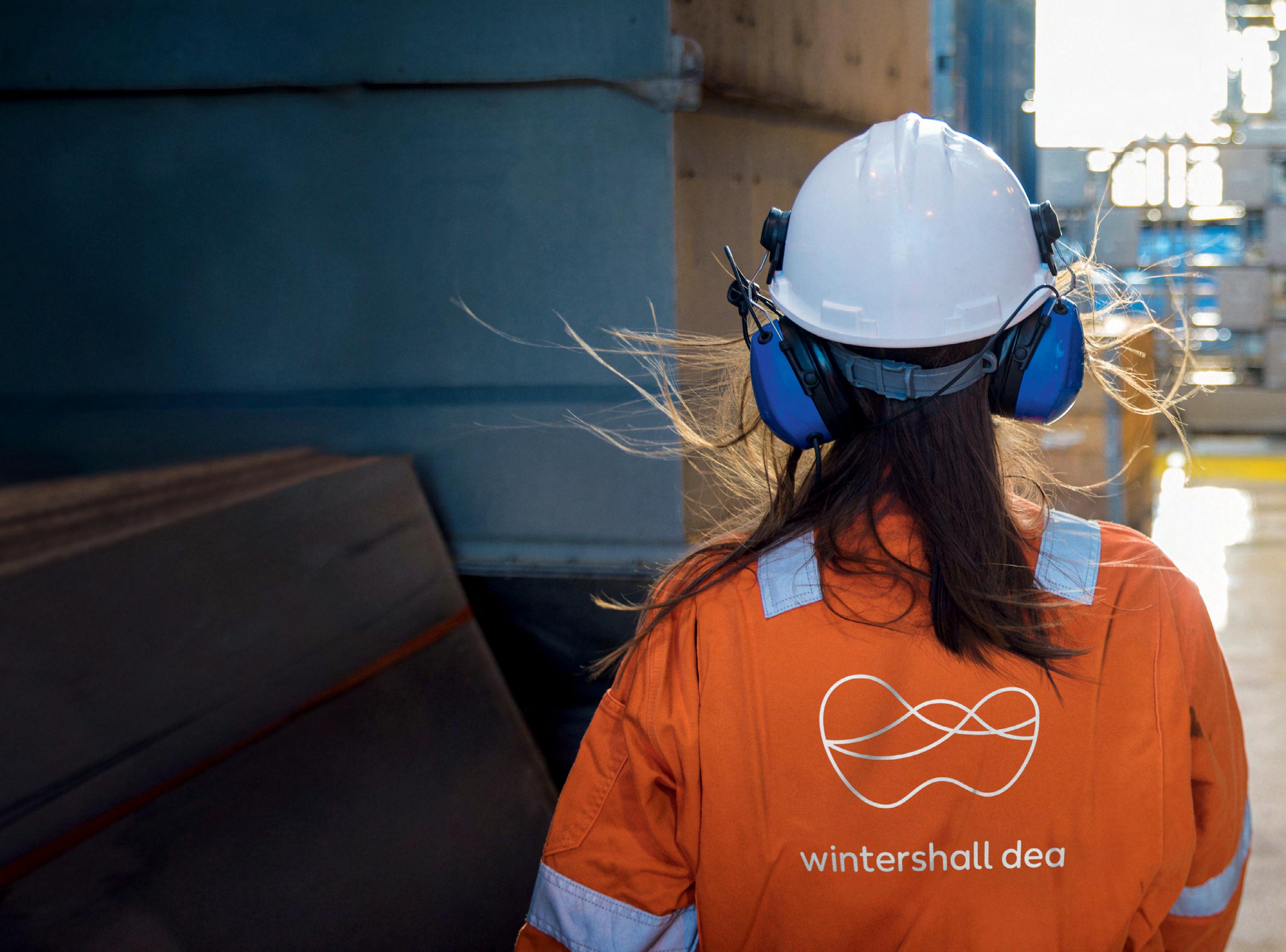

EDITOR’S
On many occasions, Minister of Petroleum and Mineral Resources Tarek El Molla called on oil and gas producers to exert more effort and introduce innovative solutions to ramp up production.
The minister’s remarks coincided with the new Cabinet’s plans to ration electricity to save natural gas to increase exports. Increasing production and diverting more volumes of natural gas to be exported can be a key solution for the country to navigate itself out of the economic challenges created by the Russia-Ukraine war.
Our issue casts light on the role that hydrocarbon production can play in enhancing Egypt’s economic performance and the best ways to do this. We had the great opportunity of hearing deep insights from David Thomas, Cheiron’s
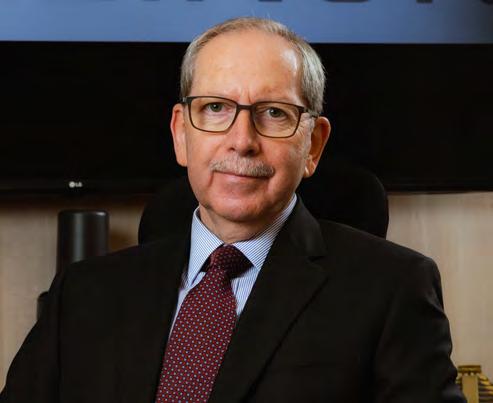
Chief Executive Officer (CEO). We had another interesting interview with Alexandra Thomas, Egypt's Managing Director at Neptune Energy. Our Research and Analysis section offers an in-depth look at the new investments and agreements conducted over the past year. Our writers cover the economic, strategic, and technical aspects of increasing oil and gas production.
We hope you have a good read and wish Egypt’s oil and gas sector a productive rest of the year.
IHAB SHAARAWY Managing EditorCONTENTS
An interview with David Thomas, Cheiron’s Chief Executive Officer
General Manager
AYMAN RADY
Research & Analysis Manager
MAHINAZ EL BAZ
Managing Editor
IHAB SHAARAWY
Senior Editors
RANA AL KADY
NADER RAMADAN
Senior Writer
SARAH SAMIR
Staff Writers
FATMA AHMED
ISRAA NOUR ELDEEN
Senior Research Analyst
REHAM GAMAL
Research Analysts
YOUSTINA MOUNIR
JOLLY MONSEF
MARIAM AHMED
Statistician
NADA ABBAS
Chief Reporter
WAEL EL-SERAG
Business Development Manager
TAMARA EWISS Marketing Specialist
SHROUK IHAB Creative Art Director
OMAR GHAZAL Art Director
MAGED KHATTAB
Graphic Designer
MERNA WILLIAM
3D Visualizer
TAMER GAMAL
Photographer
HADY NABIL
CEO Executive Assistant
NOHA ZAYED
Web Master
OLFAT KAMEL
Web Developer
MOHAMED ELWAKEEL
Administration
TAGHREED MOUNIR
Senior Accountant
MAHMOUD KHALIL Accountant
MOHAMED NAGY Distribution Officers
MAHSOUB KENZI MOHAMED EL-SAYED MAHMOUD NABIL OSAMA MOHAMED HESHAM MOHAMED
Publisher
MOHAMED FOUAD
All rights to editorial matters in the newspaper are reserved by Egypt Oil and Gas and no article may be reproduced or transmitted in whole or in part by any means without prior written permission from the publisher.



EL SISI DISCUSSES GREEN HYDROGEN, AMMONIA COOPERATION WITH FFI

President Abdel Fattah El Sisi met with Andrew Forrest, President of the Australian Fortescue Future Industries (FFI) Energy, in the presence of Mohamed Shaker, Minister of Electricity and Renewable Energy; Tarek El Molla, Minister of Petroleum and Mineral Resources; and Moataz Kandil, Regional General Manager for the Middle East and North Africa region of the company.
The meeting followed up on the cooperation between the Australian company and the electricity and renewable energy sector in Egypt in the field of producing green hydrogen and green ammonia, including a project to produce 9.2 gigawatts of electric power from new and renewable energy, in addition to the localization of industries related to the generation of electricity from the sun and wind, such as solar panels and wind turbines.
El Sisi emphasized the importance of providing all the necessary facilities to accelerate the implementation of joint green energy projects and to benefit from the advanced expertise of Australian companies in this field. This also fits within the framework of the national strategy that aims to increase the contribution of renewable energy within the electric energy mix.
MADBOULY, UN ENVOY DISCUSS EMISSIONS REDUCTION EFFORTS
Prime Minister Mostafa Madbouly met with Mark Carney, the United Nations (UN)’s Special Envoy on Labor and Climate Action & Finance, and Co-Chair of the “Glasgow Financial Alliance for Net Zero Emissions,” on the sidelines of his participation in the Egypt-ICF 2022 in its second edition, which started on September 7th in the New Administrative Capital under the auspices of President Abdel Fattah El-Sisi. The meeting was attended by Minister of International Cooperation, Rania Al-Mashat, according to the Cabinet statement.
Madbouly reviewed Egypt’s vision to chair the 27th session of the Conference of the States Parties to the United Nations Framework Convention on Climate Change (COP27), which will be hosted by Sharm el-Sheikh next November, highlighting the focus on implementing this vision in line with the commitments of the “Glasgow Financial Alliance for Net Zero Emissions.”
EL MOLLA HOLDS NATURAL GAS TALKS WITH CYPRIOT ENERGY MINISTER AT GASTECH 2022
Minister of Petroleum and Mineral Resources Tarek El Molla held talks with Cypriot Minister of Energy, Commerce and Industry Natasa Pilides on the sidelines of his participation at the Gastech Exhibition and Conference 2022 in Milan, Italy.
During the meeting, the two ministers discussed joint cooperation projects and the conditions of the oil and gas market in light of the challenges that they face. They further reviewed the current status of the gas discoveries made in Cyprus and how to optimize their exploitation, noting that Cyprus seeks to benefit from Egypt’s facilities and infrastructure which will receive Cypriot gas after developing the discoveries which serve the interests of both countries.
EL MOLLA: EGYPT TARGETS OIL, GAS INVESTMENTS OF UP TO $8B IN 2022/23
Minister of Petroleum and Mineral Resources Tarek El Molla declared that Egypt seeks to achieve between $7.7 billion to $8 billion in oil and gas sector investments during fiscal year (FY) 2022/23, Bloomberg Alsharq reported.
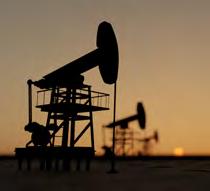
Given so, it is expected that investments from international oil companies will increase 35% to 40% compared to $5.7 billion in the last FY.
El Molla also stated that there is petroleum cooperation with Qatar, especially with QatarEnergy company in a group of concessions in the Mediterranean and the Red Sea.
Additionally, El Molla mentioned that Egypt targets more natural gas exports than the current amounts which are worth $500 million per month.
OIL, GAS SECTOR TO PARTICIPATE IN DECARBONIZATION DAY DURING COP27
Minister of Petroleum and Mineral Resources Tarek El Molla held a meeting with a delegation from the Oil and Gas Committee at the American Chamber of Commerce in Cairo to coordinate efforts to prepare for the participation of the oil and gas sector in Decarbonization Day, which will be organized at COP27, which Egypt will host in Sharm El Sheikh this coming November.
The meeting was attended by the CEO of the American Chamber of Commerce in Cairo Sylvia Menassa and the heads and representatives of American companies operating in Egypt, including Bechtel, Honeywell, Schlumberger, Baker Hughes, Apache, Chevron, ExxonMobil, and the two undersecretaries of the Ministry of Petroleum for projects and technical office, and the Vice President of the Egyptian Natural Gas Holding Company (EGAS) for Green Energy.
During the meeting, El Molla confirmed that Egypt is the first country to provide an opportunity for the oil and gas industry and its international companies at the climate summit to present their actual plans for environmental improvement and reducing emissions from the activities of this industry by using the latest technologies.
NUMBER OF THE MONTH

On October 27, 2016, Jordan’s Ministry of Energy and Mineral Resources signed a cooperation protocol with the Jordanian Egyptian Fajr Natural Gas Company to regulate natural gas pricing for Jordanian industries. The protocol was inked by Jordanian Energy Minister Ibrahim Saif and the chairman of the company Fouad Rashad Abass.
Egyptian Minister of Petroleum and Mineral Resources Tarek El Molla visited Jordan to attend the signing ceremony of the protocol.
At the same visit, Energy Minister Ibrahim Saif and his Egyptian counterpart Tarek El Molla inaugurated a measurement and supply station to provide natural gas to the Amman-Asia Electric Power Company’s multi-fuel run electricity plant.
During the inauguration, El-Molla announced that the Jordanian Egyptian Fajr Natural Gas Company would participate in many future energy projects in the Hashemite Kingdom.
in January 2017, the Jordanian Egyptian Fajr Natural Gas Company signed an agreement with Fine Hygienic Holding to supply gas to Jordan’s industries.
Increase in Petroleum Products, Natural Gas & LNG Exports in June 2022
Egypt’s exports of petroleum products and natural and liquefied natural gas (LNG) jumped to reach $781 million in June 2022, compared to $523 million during the same period in 2021. Meanwhile, crude oil exports rose from $268 million to $232 million with a 15.6% increase, according to Central Agency for Public Mobilization and Statistics (CAPMAS).
This hike in exports came in line with the Ministry of Petroleum and Mineral Resources’ (MoP) direction to promote oil products and natural gas exports to make use of the current increase in global oil gas prices.
i-Trak drilling automation services
Get safe, efficient, and predictable drilling performance
i-Trak™ drilling automation services from Baker Hughes reduce operational risk and well delivery costs by integrating and automating drilling systems.
In today’s complex drilling environment where surface and downhole real-time systems must deliver according to plan in a predictable, efficient, and safe manner, automation of drilling systems is crucial. The drive to reduce HSE risks by moving personnel from wellsite red zones to remote centers is simplified and supported through the integration and automation of drilling systems.
Baker Hughes’s i-Trak drilling automation services improve drilling performance, wellbore quality and trajectory; extend bit life; reduce nonproductive and invisible lost time (NPT, ILT) to deliver wells faster and more economically while reducing operational risk to enable de-manning at the rigsite. These benefits are achieved by aggregating real-time surface and downhole data and annular pressures, and using hybrid physics-based and data-driven models, in combination with automated standardized operating procedures and checklists.
Our i-Trak drilling automation services manage well construction via fully closed loop-control of Baker Hughes rotary steerable assemblies, wellbore
hydraulics, and drilling optimization services.
i-Trak services offers two levels of automated control:
• Advisory mode: recommended actions or parameters are displayed to the driller who can accept or reject them
• Closed-loop mode: parameter changes and instructions are automatically downlinked to downhole tools or transmitted to rig automation platforms to control surface parameters.
In closed-loop mode, the human driller can start/stop the system at any time to make any desired adjustments to the drilling path or operational parameters.
The i-Trak service is a fully integrated extension of Baker Hughes’ digital well planning software and ecosystem. This allows i-Trak to monitor and control drilling and reservoir navigation operations based on a continuously updated digital twin of the reservoir and downhole environment.
Contact your Baker Hughes representative to learn how i-Trak drilling automation services can help you achieve safer, more efficient, and more predictable performance on your next well.

Applications
• Wells with inefficient, or inconsistent or unpredictable drilling performance
• Wells with hole cleaning issues, stability issues, or challenging pressure windows
• Wells that must be consistently and repetitively drilled
• Wells using decision-making remote operations or leveraging integrated operations personnel models
Benefits
• Improved safety, lower risks
- Openhole pressure regime monitoring with automated alerts
- Swab/surge NPT protection
- Reduced personnel risks
• Superior drilling and reservoir navigation efficiency
- Improved hole cleaning
- Optimized tripping speeds
- Guaranteed average-excess dogleg severity limits (AEDLS) <1°/100 ft. (30m)
- Increased hydrocarbon recovery
• Predictable drilling performance
- Increased gross ROP
- Fewer stuck pipe incidents
- Reduced NPT and ILT
EGYPT’S NATURAL GAS EXPORT PLANS TAKE CENTER STAGE AT GASTECH
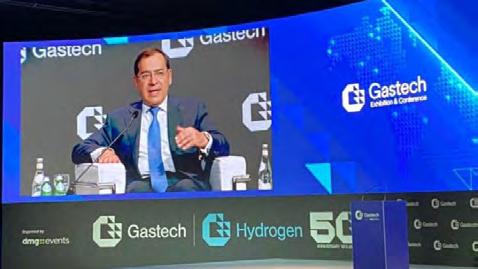
Minister of Petroleum and Mineral Resources Tarek El Molla stated that the remarkable growth that Egypt achieved in recent years in the natural gas sector contributed to maximizing the use of its distinguished resources and infrastructure in this sector to meet the current global challenges in energy markets. El Molla emphasized that the growing availability of gas resources as well as the completion of the required infrastructure for export enabled Egypt to benefit from the global increase in LNG exports prices in the face of the significant rise in international oil prices, which exceeded $100 per barrel, in light of importing part of the quantities needed to meet the local needs of petroleum products.
El Molla also stressed that Egypt is working to build strong partnerships and constructive regional cooperation in the field of natural gas in order to support Egypt’s role as a center for receiving, transporting, and exporting natural
gas supplies from the eastern Mediterranean to the European Union in order to achieve optimal economic benefit from the infrastructure and facilities available in Egypt. This represents the important solutions available and comparative advantages that can be exploited economically to make available additional quantities of natural gas from the eastern Mediterranean to meet the increasing demand in Europe.
ELECTRICITY RATIONALIZATION EFFORTS SAVE MORE NATURAL GAS FOR EXPORT
Minister of Petroleum and Mineral Resources Tarek El Molla praised the decision, asserting that it has contributed to saving large quantities of natural gas used in operating power stations and added two shipments of natural gas to the usual quantities of gas for export.
The meeting was held by Prime Minister Mostafa Madbouly in the presence of Mohamed Shaker, Minister of Electricity and Renewable Energy; Hisham Amna, Minister of Local Development; and Mohamed El-Sayed, Assistant Minister of Local Development.

Shaker indicated that the Ministries of Electricity and Petroleum agreed on the quantities of mazut
to be used in power stations, thus saving natural gas that is used to operate these stations, in addition to operating Siemens stations, which consume less gas, and at the same time enjoy Higher efficiency in operation.
PHPC ACHIEVES 163 BCF OF NATURAL GAS SALES
Hossam Zaki, the Chairman of the Pharaonic Petroleum Company (PhPC), announced that his company has achieved planned production rates by 100%, recording 163 billion cubic feet (bcf) of natural gas sales in addition to more than 3 million barrels of condensates.
This announcement was made during the general assembly of PhPC to approve its annual results for fiscal year (FY) 2021/22 in attendance of the Minister of Petroleum and Mineral Resources Tarek El Molla.

Zaki added that a lot of projects are under implementation to promote safety and operational efficiency as well as cost reduction in addition to raising the efficiency of the condensates’ infrastructure, transportation and storage.
PhPC’s Chairman mentioned that the Satis field development project, which belongs to the North El-Borg region, was assigned to PhPC with production rates reaching 100 million cubic feet per day of natural gas and 6,800 barrels of condensates per day.
EL MOLLA PROMOTES EGYPT’S NATURAL GAS INFRASTRUCTURE AT GASTECH
Minister of Petroleum and Mineral Resources Tarek El Molla stated that there are great opportunities for cooperation between the countries of the East Mediterranean Gas Forum (EMGF) to optimally exploit gas reserves in the region, adding that Egypt’s unique infrastructure in the field of natural gas is a key element in the success of this cooperation.
Egypt has agreed with the Forum’s countries to quickly achieve the priorities during the coming period, which is to take advantage of the full capabilities and capacities of the gas liquefaction facilities and export of natural gas in Egypt as well as the current discoveries in the

Eastern Mediterranean region to contribute to the economic exploitation of the region’s gas resources and transfer them to Europe to meet part of the demand, El Molla noted.
This came during the minister’s participation in a ministerial discussion session entitled “Unlocking and Accelerating the Full Potential of the Eastern Mediterranean Gas Basin,” which was held by the EMGF as part of the activities of Gastech 2022 currently being held in Milan, Italy.
CAPRICORN ANNOUNCES WI PRODUCTION IN EGYPT AVERAGED 35,500 BOE/D IN H1 2022
Capricorn announced that its working interest (WI) production from Egypt averaged~35,500 barrels of oil equivalent per day (boe/d) in H1 2022.
The company added that its net liquids WI production in Egypt grew from 2021 postacquisition levels from 13,870 boe/d to ~14,600 boe/d in H1 2022.
In addition, its gas production recorded ~117 million standard cubic feet per day (mmscf/d) in H1 2022.
Regarding financial results, Capricorn said that it predicts capital expenditure on production and development in Egypt for 2022 to be $8090 million, in addition to $20-25 million for the exploration and appraisal activities in Egypt and $75-80 million for international exploration.
UOG EXPECTS PRODUCTION OF 300 BBL/D FROM AJ-14 WELL, LAUNCHES DRILLING OF ASH-4 WELL
United Oil & Gas (UOG) announced that on the AJ-14 well, it expects consistent flow rates in the range of 300 barrels of oil per day (bbl/d) gross and that the well can be promptly brought into production to generate additional cashflow.
In a statement, the company said that it has conducted testing programs on the well and it still continues after it has successfully encountered seven meters of net pay in the primary ARC target in line with the higher end of the pre-drill estimates.
It added that the well-recorded indications of a hydrocarbon-bearing reservoir in the deeper Abu Roash G (“ARG”) reservoir.
On the same context, UOG announced that it started drilling at the ASH-4 development well which is the fourth in the Abu Sennan license, onshore Egypt.
GPC’S PRODUCTION REACHES 68,300 BOE/D IN 2021/22
While chairing the general assembly of the General Petroleum Company (GPC), Tarek El Molla confirmed that GPC holds an advanced position when it comes to the production of oil and gas within the Egyptian petroleum industry after it ranked third in production rates, with up to 68,300 barrels of oil equivalent per day (boe/d), which also represents the highest rate in the company’s history.
El-Molla stressed that the ministry will continue to increase investments and assign new concession areas to the company to create greater opportunities for it to expand and increase production of crude oil and natural gas, especially in light of its important role as a state-owned company whose entire production return to the state.
EL MOLLA: EGYPT TARGETS OIL, GAS INVESTMENTS OF UP TO $8B IN 2022/23
Minister of Petroleum and Mineral Resources Tarek El Molla declared that Egypt seeks to achieve between $7.7 billion to $8 billion in oil and gas sector investments during fiscal year (FY) 2022/23, Bloomberg Alsharq reported.
Given so, it is expected that investments from international oil
companies will increase 35% to 40% compared to $5.7 billion in the last FY.
El Molla also stated that there is petroleum cooperation with Qatar, especially with QatarEnergy company in a group of concessions in the Mediterranean and the Red Sea.
EL MOLLA, PETROLEUM OFFICIALS AT GASTECH DISCUSS STRENGTHENING COOPERATION, INVESTMENTS
During his participation at Gastech Exhibition and Conference 2022, Minister of Petroleum and Mineral Resources Tarek El Molla met with several high-level officials and leaders to strengthen the economic relations as well as attract new partnerships to Egypt.
El Molla’s meeting with the Indian Minister of Petroleum and Natural Gas Shri Hardeep S Puri involved discussing bilateral cooperation in oil and gas. El Molla also showcased the latest progress that the Egyptian petroleum sector made.

INSPECTIONS
For his part, Hardeep S Puri expressed his desire to establish energy projects in India with the help of Egyptian companies. The two parties agreed to boost cooperation on compressed natural gas (CNG) projects.
MADBOULY INSPECTS COP 27 PREPARATIONS IN SHARM EL-SHEIKH
Prime Minister Mostafa Madbouly completed an inspection tour in Sharm El-Sheikh to follow up on development projects being implemented in the city as well as preparations for Egypt’s hosting of COP 27 this November, according to a Cabinet statement.
Khaled Fouda, Governor of South Sinai, stated that the solar energy projects as well as projects for environmentally friendly transportation stations, and car fueling stations are among the
projects that have been 75% (or less) implemented.
The governor also reviewed the ongoing procedures to transform Sharm El-Sheikh into a green, smart and sustainable city, through green transformation projects such as the environment-friendly health facilities, explaining that Sharm El-Sheikh International Hospital is considered the first green hospital, and during the first phase of the project, a committee was formed for environmental sanitation and sustainability.
EL MOLLA LEADS INSPECTION OF PETROLEUM REGION IN MOSTOROD
Minister of Petroleum and Mineral Resources Tarek El Molla, Qalyubia Governor Abdel Hamid El Hagan and leaders of the oil and gas sector inspected the development projects in the petroleum geographic area within the Mostorod region, which is a major area serving Greater Cairo and constantly witnessing an increase in its refining, marketing and distribution capabilities, the ministry said in a statement.
El Molla and the governor inaugurated the Ismailia Canal Road in the Mostorod region, which the petroleum companies in the region financed its development and raised its efficiency in a manner that suits the region. In addition, the warehouses of the Co-operation Petroleum Company were opened in the region after the completion of development work and raising its operational efficiency. The Minister
also inaugurated a project to recover flare gases at the Cairo Oil Refining Company (CORC) and laid the foundation stone for the expansion of the petroleum geographical area in Mostorod.
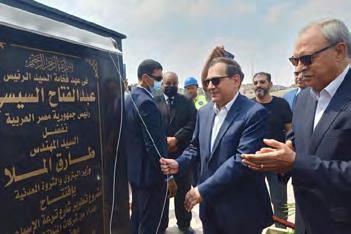
At the beginning of the tour, El Molla chaired the meeting of the Petroleum Geographical Committee in the Mostorod region, in the presence of the Governor of Qalyubia and the heads of the petroleum companies operating in the region.


OIL, GAS SECTOR TO PARTICIPATE IN DECARBONIZATION DAY DURING COP27
Minister of Petroleum and Mineral Resources Tarek El Molla held a meeting with a delegation from the Oil and Gas Committee at the American Chamber of Commerce in Cairo to coordinate efforts to prepare for the participation of the oil and gas sector in Decarbonization Day, which will be organized at COP27, which Egypt will host in Sharm El Sheikh this coming November.
During the meeting, El Molla confirmed that Egypt is the first country to provide an opportunity for the oil and gas industry and its
international companies at the climate summit to present their actual plans for environmental improvement and reducing emissions from the activities of this industry by using the latest technologies.
EGYPT TO HOST FIRST MEETING OF NEWLY ESTABLISHED ALLIANCE FOR INDUSTRY DECARBONIZATION
The International Renewable Energy Agency (IRENA) in cooperation with 13 companies across all industry sectors has launched the global Alliance for Industry Decarbonization which will hold its first meeting in Egypt at COP 27 in Sharm El Sheikh, according to IRENA.
The statement mentioned that this new Alliance aims to accelerate net-zero ambitions and industrial decarbonization according to Paris Agreement Climate goals. IRENA said that it “will coordinate and facilitate
COOPERATION
the activities of the Alliance based on its vast experience in hosting similar multi-stakeholder platforms, such as the Global Geothermal Alliance, the SIDS Lighthouses, and the Coalition for Action.”
EL MOLLA, PETROLEUM OFFICIALS AT GASTECH DISCUSS STRENGTHENING COOPERATION, INVESTMENTS
During his participation at Gastech Exhibition and Conference 2022, Minister of Petroleum and Mineral Resources Tarek El Molla met with several high-level officials and leaders to strengthen the economic relations as well as attract new partnerships to Egypt.
El Molla’s meeting with the Indian Minister of Petroleum and Natural Gas Shri Hardeep S Puri involved
discussing bilateral cooperation in oil and gas. El Molla also showcased the latest progress that the Egyptian petroleum sector made.
EL SISI DISCUSSES GREEN HYDROGEN, AMMONIA COOPERATION WITH FFI

President Abdel Fattah El Sisi met with Andrew Forrest, President of the Australian Fortescue Future Industries (FFI) Energy.
The meeting followed up on the cooperation between the Australian company and the electricity and renewable energy sector in Egypt in the field of producing green hydrogen and green ammonia, including a project to produce 9.2 gigawatts of electric power from new and renewable energy,
in addition to the localization of industries related to the generation of electricity from the sun and wind, such as solar panels and wind turbines.

TOTALENERGIES
TOTALENERGIES SELLS ITS 18% STAKE IN IRAQ’S SARSANG OIL FIELD
TotalEnergies has completed the sale of its 18% stake in the onshore Sarsang oil field in Iraqi Kurdistan for $155 million to ShaMaran Petroleum Corp, a company listed in Canada and Sweden that specializes in oil exploration and production in Kurdistan.
PETROFAC

Depending on future output and oil prices, an extra contingent consideration of $15 million will be due.
2011 saw the discovery of the Sarsang field, which is currently controlled by HKN (62%), with KRG holding a 20% stake. In 2021, TotalEnergies contributed about 3,500 barrels per day to output.
In Iraq, TotalEnergies started its activities in the 1920s with the discovery of Kirkuk field. The company currently has a 22.5% interest in the Halfaya oil field. The company’s production in Iraq is about 14 000 boe per day in 2021.
PETROFAC, OHC SIGN MOU TO DEVELOP OMAN’S GREEN HYDROGEN CAPABILITIES
A memorandum of understanding (MoU) between Petrofac and the Oman Hydrogen Centre (OHC) has been signed, outlining how the two parties will work together to develop Oman’s renewable energy sector’s capacity, particularly in the area of green hydrogen.
ADNOC

OHC is the first research facility of its kind in the Sultanate and is situated at the German University of Technology (GUtech). It aids the nation in speeding the switch to renewable energy. In line with Oman Vision 2040, the center serves as a global hub for research, technology, education, industry applications, and the economy.
In addition to numerous studies for small-scale industrial users around the world, Petrofac recently finished front-end engineering design (FEED) for large-scale green hydrogen production facilities. This company has a growing track record of supporting new energy projects across a wide range of technologies.
ADNOC REFINING SET TO FINISH FIRST PHASE OF WASTE HEAT RECOVERY PROJECT
The first stage of ADNOC Refining’s groundbreaking Waste Heat Recovery project at the General Utilities Plant in Ruwais, Abu Dhabi, is about to be finished.
According to the UAE’s Net Zero by 2050 Strategic Initiative, ADNOC produces some of the least
NAFTOGAZ
carbon-intensive petroleum in the world and is further aiming to reduce its greenhouse gas (GHG) emissions intensity by 25% by 2030.
The Waste Heat Recovery project is one of several strategic initiatives to decarbonize ADNOC’s operations and builds on the
company’s heritage of responsible environmental stewardship. This includes significant accomplishments like the establishment of the region’s first commercialscale Carbon Capture and Underground Storage facility in 2016 and the adoption of a zero regular gas flaring policy in the early 2000s.

NAFTOGAZ PRODUCTION TO RECOVER AS UKRAINE ACHIEVES MILITARY GAINS
After gas production at Ukraine’s Naftogaz took a 2% dip between January and August due to the Russian invasion, the company’s CEO Yuriy Vitrenko indicated that he planned to restore
ENI

production as a result of the Ukrainian military’s recent victories, Reuters reported.
The majority of Ukrainian gas is produced by Naftogaz, which will produce 13.7 billion cubic
meters of gas in 2021. The Poltava and Kharkiv regions, which have practically been liberated by recent counteroffensives, are where the majority of the gas resources are found.
ENI, ADNOC WORK TO POSITIVELY CONTRIBUTE TO GLOBAL GAS SUPPLY SECURITY
In order to accelerate the existing development project and time-to-market of new exploratory technologies, Abu Dhabi National Oil Company (ADNOC) Managing Director and Group CEO Sultan Ahmed El Jaber and Eni CEO Claudio Descalzi met in Abu Dhabi to discuss the
CHEVRON

company’s activities in the Emirate of Abu Dhabi, future projects, and areas of common interest and collaboration.
Descalzi and Al Jaber, also the UAE’s Minister of Industry and Advanced Technology, talked about
advancing the high-profile Ghasha project. The project is anticipated to provide more than 1.5 billion cubic feet of gas per day, as well as more than 120,000 barrels of highly valuable oil and condensate, and it is projected to contain a considerable amount of recoverable gas.
CHEVRON GRANTED INTEREST IN THREE PERMITS FOR CCS PROJECTS OFFSHORE AUSTRALIA
Chevron Corporation is a partner in three joint ventures that have been given an interest in three greenhouse gas assessment licenses offshore Australia through its affiliate Chevron Australia Pty Ltd.
The blocks, which include three in the Carnarvon Basin off the coast of Western Australia’s north-
west and one in the Bonaparte Basin off the coast of the Northern Territory, have a combined area greater than Belgium of more than 31,500 km2.
Chevron is concentrating on carbon capture, utilization, and storage (CCUS), largely through hubs with third-party emitters as partners and consumers, renewable fuels, hydrogen,
offsets, and other cutting-edge technologies as part of its global reduced carbon strategy.
CHARIOT, MOROCCO INK PIPELINE TIE-IN AGREEMENT

In order to gain access to the significant Maghreb Europe Gas Pipeline (GME) in Morocco, Chariot Limited, the transitional energy firm with an emphasis on Africa, has signed a Pipeline TieIn Agreement with the Office National des
CONOCOPHILLIPS

Hydrocarbures et des Mines (“ONHYM”). The GME, which is owned and controlled by ONHYM, extends from eastern Morocco through Tangier in the north and then over to Spain.
This arrangement will make it possible for the gas generated by the Anchois Gas Project, located off the coast of Morocco, to be transferred via the GME to several potential off takers.
CONOCOPHILLIPS, JERA OFFERING TO DEVELOP U.S. HYDROGEN GAS PLANT
ConocoPhillips, one of the biggest independent oil producers in the United States, will supply natural gas and oversee a carbon capture and storage facility for a proposed U.S. hydrogen gas project that will be developed in collaboration with Japan’s biggest utility JERA, Reuters reported based on the companies’ statements.
NIOC
Natural gas producers now have a new market opportunity thanks to the agreement to supply gas for hydrogen, a potentially clean fuel for the generation of power. Conoco is one among several businesses that have long-term supply agreements in place with LNG producers who provide utilities.
According to JERA, the Japanese gas and electricity company that is in charge of the plant, a feasibility study to evaluate the hydrogen project might be finished by the end of the year. It seeks to create ammonia that can be exported and sold in the United States, Europe, and Asia by producing hydrogen from natural gas.
NIOC TO ALLOCATE $100M FOR LPG EXPORT TERMINAL CONSTRUCTION
Iran will use $100 million in foreign direct investments (FDI) to build a liquefied petroleum gas (LPG) export terminal, according to the CEO of the National Iranian Oil Company (NIOC) Mohsen Khojastehmehr.

QATARENERGY
Khojastehmehr elaborated that one of NIOC’s top aims during the Raisi administration is to maximize LPG export through liquefaction, adding: “In this regard, we found it necessary to strengthen a private company, and the powerful Petrosanat
Iranian Company entered this field.”
QATARENERGY RENEWABLE SOLUTIONS, QAFCO TO CONSTRUCT AMMONIA-7 PROJECT
The Ammonia-7 Project, the first and largest blue ammonia project in the world, was approved for construction today by QatarEnergy’s affiliates, QatarEnergy Renewable Solutions and Qatar Fertiliser Company (QAFCO).
The Ammonia-7 Project, which will be the largest such plant in the world with a capacity of 1.2 million tonnes per year of Blue Ammonia, has
TAQA
been established by a partnership between QatarEnergy Renewable Solutions and QAFCO.
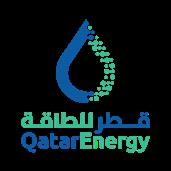
The new facility, which will be run by QAFCO as a part of its integrated facilities, will be situated in Mesaieed Industrial City (MIC) and is anticipated to begin operations in Q1 2026.
The news was made at a signing ceremony for the project contracts, which included the
engineering, procurement, and construction (EPC) contract, that was conducted at QatarEnergy’s headquarters in Doha. The EPC contract, worth roughly $1 billion USD, was given to a group led by ThyssenKrupp and Consolidated Contractors Company (CCC).
EGYPT’S TAQA ARABIA, SAUDI NATURAL GAS DISTRIBUTION CO. SIGN GAS TRANSPORTATION SERVICES, NETWORKS MOU
Egypt’s TAQA Arabia has inked a memorandum of understanding (MoU) with Saudi Arabia’s Natural Gas Distribution Company to cooperate in developing and operating gas transportation services and gas networks.
MISR PETROLEUM
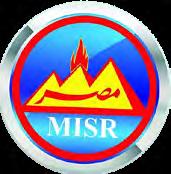
This announcement was disclosed by Saudi Exchange (a subsidiary fully owned by Saudi Tadawul Group).
This MoU came as part of the Natural Gas Distribution Company’s expansion plan as well as its efforts to improve and develop the company’s profits.
MISR PETROLEUM COMPANY, EPRI COOPERATE TO ISSUE VALIDITY CERTIFICATES FOR PETROLEUM TANKERS
Misr Petroleum Company’s Chairman Mohamed Shaaban met with Mohamed Abdel Raouf, Chairman of the National Petrochemical Alliance, Head of the Engineering Inspection and the Issuance of Validity Certificates for Petroleum Tankers, and Vice Chairman of the Board of Directors of the Chemicals Services and Development Center (CSDC) at the Egyptian Petroleum Research Institute (EPRI).
The agreement aims to inspect vehicles transporting petroleum products such as gasoline, diesel, mazut and other materials for the company’s transportation fleet and to issue certificates of validity after conducting engineering inspections by the EPRI using the latest robotic devices and equipment to ensure their suitability for transporting petroleum products in accordance with international codes and the Egyptian Standards and Quality Authority. This is
in order to uphold the safety of transport fleets, public and private property, and the safety of lives and places of loading and unloading.
INVESTING FOR THE FUTURE
An interview with David Thomas, Cheiron Chief Executive Officer

It’s been a year since Cheiron acquired 50% of Shell assets in the Western Desert. How would you say the acquisition has gone?
Following the acquisition late last year, our first priority was to effect a smooth transfer of operatorship from Shell to Cheiron and to ensure that the Bapetco Joint Operating Company (JOC) did not suffer from any business disruption during the transition period.
I am pleased to say that with the kind support of the Ministry, EGPC, Bapetco, Shell, and Capricorn (our Partner in the acquisition) the transition period was managed very successfully. The highlights included the establishment of a new Cheiron team of secondees within the Bapetco organization (including many ex-Shell employees who we are pleased to welcome to our company); building new relationships with Bapetco and our Partners; achieving alignment on the planned work program; the novation of numerous commercial agreements and; the setting up new financial and management systems.
Throughout the process, the Bapetco team remained fully focused on safely running the field operations, demonstrating why Bapetco is one of the preeminent JOCs in Egypt.
How successful are your E&P plans for the assets so far, and how are they reflected in the company’s production levels?
When we originally evaluated the Bapetco portfolio, we identified that one of the most important value drivers for the acquisition was to increase the
I am pleased to say that with the kind support of the Ministry, EGPC, Bapetco, Shell, and Capricorn (our Partner in the acquisition) the transition period was managed very successfully.
pace of investment in the assets. We, therefore, laid plans to rapidly raise the number of drilling rigs working in the fields from 2 to 5, whilst also maintaining a very active workover program using 5 workover rigs to reactivate, recomplete, and service the existing well stock.
In preparation for this ramp-up in activity, many technical workshops were held with Bapetco and our Partners to identify and prioritize the best development and near-field exploration and appraisal wells to drill in the program.
In parallel with the technical work, Bapetco moved very decisively to source the 3 additional drilling rigs that were required and succeeded in contracting them on competitive terms, just before the rig market tightened in Q1 this year.
Unfortunately, however, some delays were experienced in the rig delivery times and start-up operations which has impacted the pace of the drilling program and the production ramp-up during the course of the year. I am pleased to say, though, that all the rigs are now operational and the work program is in full flow.
How have these assets successfully enhanced Cheiron’s position over its competitors?
The Bapetco assets have increased Cheiron’s gross production in Egypt to around 125 kboepd, establishing us as the fourth largest producer in the country. The acquisition has also given us a strong position in the prolific Western Desert, complimenting the rest of our asset portfolio, which is mainly held in two of the other main hydrocarbon basins in Egypt, namely, the Gulf of Suez and the Nile Delta.
From a strategic perspective, the acquisition has helped Cheiron build the scale required to be relevant in today’s E&P industry and to form many important new relationships. It has also allowed us to significantly strengthen the breadth and depth of the Cheiron team, access new technologies, and improve our supply chain management practices. The latter is an area where I believe we can still achieve much more by using economies of scale and optimizing contracting arrangements across the Company.
What are the Cheiron’s future plans in Egypt?
The Company is entering an exceptionally busy period with a significant amount of drilling and project activity planned over the next three years, leading to further production growth
Onshore, we are currently running with 7 drilling rigs and 8 workover units, working on the Bapetco and North Bahariya fields (also located in the Western Desert). Offshore, we expect to have 2 jack-up rigs active in the Gulf of Suez and the Mediterranean for the foreseeable future.
Our major projects include the Geisum GNN field development in the Gulf of Suez, where we are currently drilling development wells and preparing to install Early Production Facilities at the end of this year. We are also about to launch the West El Burullus gas development in the shallow waters of the Mediterranean Sea - this will be seven well, two platform development tied back to the WDDM onshore processing plant. Other projects include gas field tie-backs in Bapetco and the replacement of the Floating Production, Storage, and Offtake vessel on the Zaafarana field.
The Bapetco assets have increased Cheiron’s gross production in Egypt to around 125 kboepd, establishing us as the fourth largest producer in the country.
Though it seems that the pandemic is coming to an end, the Russia-Ukraine war rages on. How would you say that the performance of Cheiron’s assets has been affected given the current conditions and have they demonstrated endurance?
The tragic events that are occurring in Ukraine obviously had a direct and dramatic effect on energy prices and this has caused some dislocation in the oil and gas industry supply chains.
We have seen the onshore and offshore rig market tighten considerably, with rising costs and, in some cases, limited availability of high-quality rigs. Certain drilling materials are also in short supply and delivery times have become extended. Project costs have also escalated rapidly with the cost of materials, equipment, and services all increased markedly this year.
Fortunately, we managed to avoid some of the short-term issues since we placed several key drilling rigs and materials contracts, particularly for Bapetco, at the turn of the year. We have also managed to mitigate some of the market movements by working closely with our long-standing service providers and by coordinating materials requirements between our JOCs and Sister Companies.
One area, though, where the market conditions have had some material impact is on our major projects where the contractor community has had to revise cost estimates and offers as the year progressed in response to the rapidly changing commodity markets. This has understandably caused some delays and cost increases, and it has required a constructive and flexible approach from all parties in order to successfully complete contract negotiations.
How did the business environment and economic policies in Egypt help in the management and operation of the Western Desert assets?
The business environment for upstream oil and gas investments in Egypt remains very attractive for a number of reasons, perhaps most importantly, the stability of the regulatory framework and fiscal regime. During the transition period, as expected, we also found the Ministry, EGPC, and other Government Agencies to be very flexible on their requirements for Cheiron as the new Operator. In particular, there was a willingness to provide us with sufficient time
to formulate a considered view on many key concession-related decisions which had been held in abeyance pending the completion of the acquisition.
His Excellency Minister Tarek El Molla has consistently asked companies to find ways to increase oil and gas production from brownfield areas. How is Cheiron responding to this request?
The Bapetco concession areas present a number of opportunities for “slightly unconventional” reservoir developments which could yield significant volumes of gas and oil. These include tight gas reservoirs in deep horizons, the Apollonia formation and around the flanks of the Obaiyed gas field, and there may also be some oil potential in the Abu Roash source rocks and carbonates.
In order to commercially produce these resources, it will require an integrated technical and commercial plan and we have been very encouraged recently by the Government’s willingness to consider gas price improvements for new gas in the Western Desert if these could help unlock the potential.
We also know that we will need to deploy the most up-to-date technology and it is interesting to note the speed with which oil field technology is developing, particularly in the areas of drilling and hydraulic fracturing (“fracking”). A good example of this is the Apollonia tight gas play that has been tested historically in the Bapetco concession areas, with some fairly limited success, using horizontal wells and multi-fracking. Today, with the recent technological advancements, the same tests could be run with a higher chance of success with much longer wellbores and more effective fracking.
With higher oil and gas prices, what are the best options for companies to make use of their increasing profits?
With the recent oil production cuts announced by OPEC+ and the continuing market disruption caused by the war in Ukraine, it appears as if high oil and gas prices will be with us for a while. That gives companies like Cheiron, with a portfolio of attractive upstream projects, the opportunity to reinvest the majority of its free cash flow in the business and grow its production base. This is also what Egypt needs as a country since, as a net oil importer and net gas exporter, the health of the economy is highly dependent on oil and gas production levels.
A balance does need to be struck, however, since our industry is notoriously cyclical and there are certainly headwinds which could ultimately cause a downward correction to the current oil and gas prices. Many companies, will therefore be looking to strengthen their financial position and one could anticipate the industry at large entering into a period of de-gearing as companies seek to reduce risks and create more corporate flexibility.
The Company is entering an exceptionally busy period with a significant amount of drilling and project activity planned over the next three years, leading to further production growth.
Do you have any near-term plans for other acquisitions in Egypt or Internationally?
Our main focus is on delivering the work programs we have planned in our various fields to drive the Company’s growth agenda. We obviously monitor the market closely, however, and if we were to identify a value accretive acquisition either in Egypt, Mexico, or Romania or the surrounding regions, where our core skills could give us a competitive advantage and add value we would always consider it.
UNLOCKING WEALTH OF TALENT AND EXPERTISE

Could you tell us a little about the significance of Egypt assets for Neptune Energy today?
Our Neptune Energy portfolio in Egypt includes the Northwest El Amal exploration concession offshore in the Gulf of Suez, which is a 100% Neptune-operated block and where we are preparing to drill our first exploration well, Yakoot-1X. We also hold a non-operated interest in the producing asset, Alam El Shawish South West (AESW) in the western desert.
Our 100% interest in North West El Amal (NWEA) represents many exciting firsts for Neptune and Egypt: it is the first operated activity in Egypt for Neptune and will also be the first well to be drilled on the newly-acquired and processed OBN seismic data in the Gulf of Suez. We acquired the license in late 2019 and have been very busy since, working up to drilling the well which will happen early next year.
What are the latest updates for your operations in Egyptian fields?
I believe that the Yakoot 1X well will be the catalyst for reframing further exploration, not only within our own operated block but also in the Gulf of Suez.
We are absolutely focused on drilling preparations and the safe execution of this very important well. We have more than doubled the size of our organization in the last three months to support this, and we expect to spud the well early next year.
We are working closely with our partners in AESW to optimize gas and oil production, including drilling of infill wells, waterflood optimization, identifying workover activities, and evaluating exploration opportunities.
Our 100% interest in NWEA represents many exciting firsts for Neptune and Egypt: it is the first operated activity in Egypt for Neptune and will also be the first well to be drilled on the newly-acquired and processed OBN seismic data in the Gulf of Suez.
Neptune Energy has joined global initiatives to cut methane emissions. How far did you go in this regard?
Neptune operates in 7 countries around the world, including Egypt and Methane makes up 7% of our total GHG emissions on a CO2e basis. Our methane intensity, which refers to emissions from our managed operations as a percentage of gas exported, was 0.02% last year and we remain on track to reach our target of net zero methane emissions in 2030. We’ve also set an interim target of 0.015% by 2025. We were awarded ‘Gold Standard’ status for our reporting to the Oil and Gas Methane Partnership 2.0 framework in 2021, and this recognized our robust plans to report and reduce methane emissions for our operated and non-operated assets by 2024 and 2026, respectively.
At the COP26 summit in Glasgow, cutting methane emissions was recognized as the most effective way to limit near-term climate change. That’s because the gas, though short-lived in the atmosphere, retains more than 80 times more heat than CO2 over a 20-year timeframe. There are a number of important global initiatives we participate in which aim to support that objective, and Neptune has been highlighted for its industry-leading performance in tackling methane emissions associated with our operations.

Does Egypt have any role to play in such initiatives?
Absolutely, and Egypt has been a very strong voice on the global stage, recognizing the urgent necessity to tackle methane emissions. H.E El Molla deserves much credit for setting out ambitious plans to cut GHG emissions from the sector.
The country is making some great strides in reducing emissions, including the flare recovery project at the APC Refinery in Alexandria. That’s one of Egypt’s Nationally Determined Contributions which directly supports the objectives of the Paris Agreement, and contributes to the Global Methane Pledge which Egypt endorsed at the last COP summit.
The country is making some great strides in reducing emissions, including the flare recovery project at the APC Refinery in Alexandria.
Neptune Energy has recently been awarded the gold medal status from the environment, social, and governance (ESG) rating organization, EcoVadis. How did the company obtain such a prestigious award?
We have stated our 2030 ambition to store more carbon than is emitted from our operations and the use of the products we sell. We know that our ESG strategy is key to our ability to create value for all of our stakeholders, so we’ve set out actions to ensure we operate and produce energy in a safe, sustainable and responsible way.
We are very proud that EcoVadis placed Neptune in the top 5% of all 95,000 global companies assessed by the organization. They have recognized our strong environmental management practices and comprehensive labor and human rights policies and procedures, which is a great endorsement of our efforts.
In this regard, what are your plans for the Egyptian fields' sustainability and environmental wellness?
We support the ongoing endeavors of the AESW operator to reduce emissions in operations and reduce the environmental impact. This has been a multi-year investment program of which this first phase is nearing completion. There is more we can do and we will continue to progress these opportunities with our partners.
We are also mindful of our own operating footprint in Egypt. We are currently working to achieve ISO 45001 certification (Health and Safety Standard) and have ambitions to expand this to environmental certifications such as ISO 14001 and ISO 50001 in the future, reflecting our commitment to proactively identify and implement opportunities to further enhance our environmental profile.
We have a strong track record globally for high local content participation; in Egypt this is no different where we employ a team of Egyptian staff and technical specialists and we expect nearly 100% local content for the delivery of Yakoot 1. This supports local jobs and the local economy,
not just here in Cairo but also further afield in Ras El Gharib, Alexandria, and Hurghada areas.
We also support local NGOs and initiatives, such as the recent rebuilding of the Khor Awada village in Aswan following extreme flooding in the area.
In the midst of the world's struggle for energy transition, what role can Egypt play?
The challenge for Egypt – and indeed the globe – is to balance the need for affordable energy with transitioning to a lower-carbon world. We cannot focus on one at the expense of the other. I think that is very well understood by the government and institutions here in Egypt. The country is making significant investments in new gas fields in the Eastern Mediterranean, and in renewable energy. It’s a “managed energy transition” and should see about 40% of the Egyptian economy based on renewable energy by 2035.
Egypt can be an exceptionally positive role model for the rest of the world, and it has the ideal opportunity to demonstrate this when it hosts COP27 in Sharm El-Sheikh this November.
Previously, you have been assigned the role of Neptune Energy UK's Managing Director, not to mention your vast experience in Shell, Equinor, and Tullow. What difference can this experience make for operations in Egypt, and how far do you find Egypt operations challenging?
I feel extremely privileged to be given the opportunity to both lead the Neptune organization here in Egypt at this important time, on the one hand drilling a hugely strategic well for our company and for the country, and also being here in the run-up to COP27 when all eyes will be on Egypt.
I have had a very warm welcome and I am genuinely excited to be here. I am very proud of our Neptune Egypt team of top Egyptian technical professionals who will deliver this well safely and successfully. Egypt has a well-established energy sector and there is a wealth of talent and expertise here. This has been a big enabler for Neptune to be able to ramp up activity here so quickly, in the wake of the Covid pandemic.
Egypt has a well-established energy sector and there is a wealth of talent and expertise here. This has been a big enabler for Neptune to be able to ramp up activity here so quickly, in the wake of the Covid pandemic.
What is your outlook for the Egyptian oil and gas sector at the moment?
The Egyptian oil and gas sector has a strong future ahead of it. It is wellplaced to be an example to other countries around the world and Egypt leading and hosting COP27 demonstrates this very clearly. The focus the Ministry of Petroleum and Mineral resources has placed on the Energy transition, the importance of gas, and preparation for the global hydrogen economy, as well as renewable energy sources, is commendable. I believe other countries can learn much from Egypt in this regard.
The challenge for Egypt – and indeed the globe – is to balance the need for affordable energy with transitioning to a lower-carbon world. We cannot focus on one at the expense of the other.
I also appreciate the focus H.E. El Molla has lent to STEM education and the importance of gender diversity in our sector so that we can collectively ensure we secure the best people to participate and lead the energy transition in Egypt in the coming years.
PETROLEUM AGREEMENTS:

PILLAR OF ATTRACTING INVESTMENT OVER 2020 & 2021
BY JOLLY MONSEF, MARIAM AHMED & YOUSTINA MOUNIRThe petroleum agreements are the backbone of the petroleum sector that aim at attracting more investments in oil and gas exploration activities. All oil and gas exploration and development agreements in Egypt are operating according to production sharing agreements (PSAs). Under PSAs, international oil companies (IOC)s sign agreements with national oil companies (NOC)s, which are represented in Egyptian General Petroleum Corporation (EGPC), Egyptian Natural Gas Holding Company (EGAS) and Ganoub El Wadi Petroleum Holding Company (GANOPE), according to the Egypt Upstream Gateway (EUG) website.
OF
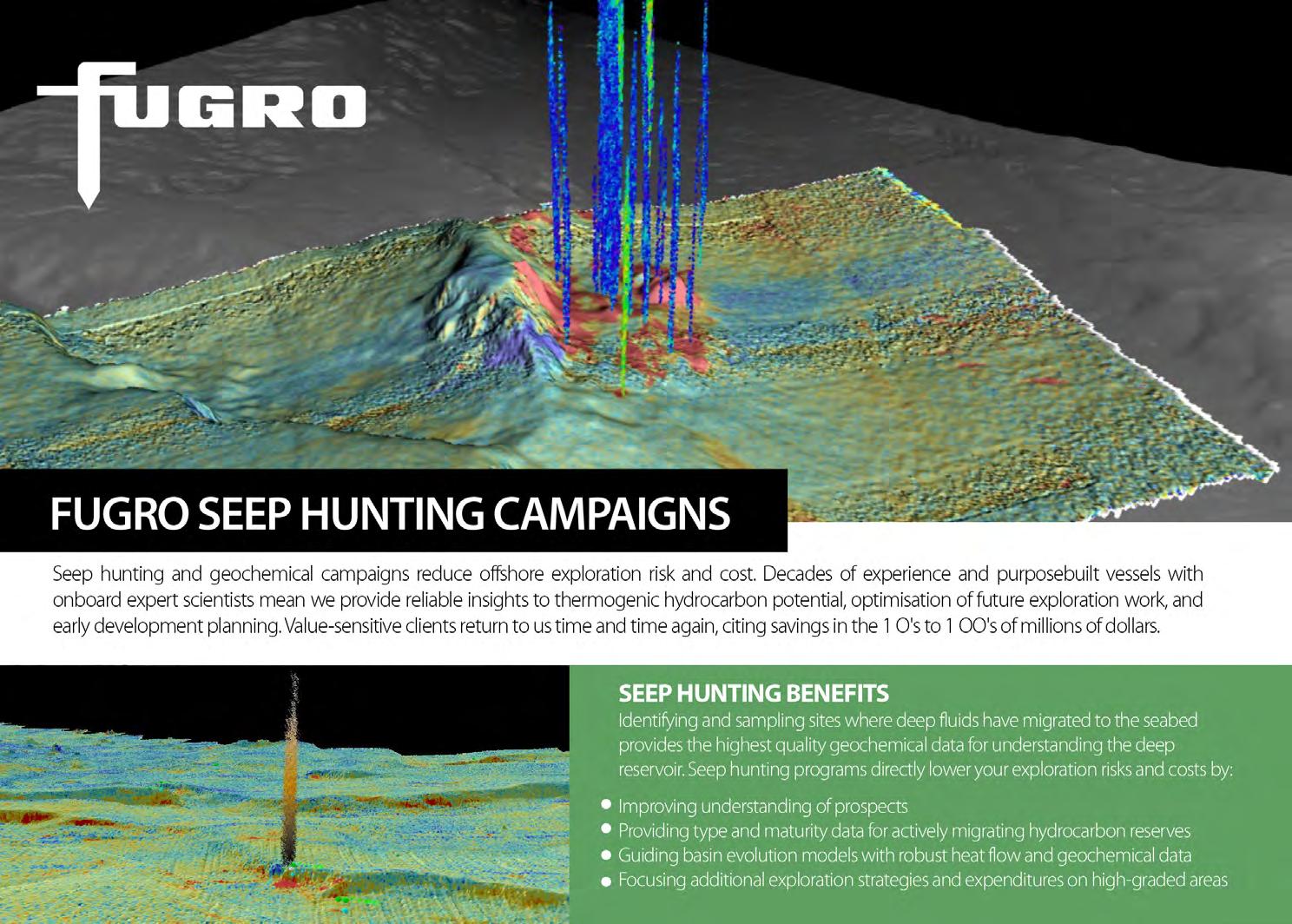
Petroleum
oil and
160 wells over the past 2 years. This is in addition to signing 29 development
$13.5 million in the Western & Eastern desert and Nile delta in the same mentioned period, according to the MoP.
major
the challenges of the COVID-19 pandemic and the global crisis, the MoP
these agreements reflected the confidence in the investment climate
in signing 52 petroleum agreements (29 signed - 23 in issuance phase) with $9.923 billion minimum investments and $421.3 million
bonus to
the sector where more than 60 IOCs are currently operating in the petroleum exploration and exploitation field within 183 areas in the Mediterranean Sea, Western Desert, Eastern Desert, Nile Delta, Sinai and Upper Egypt under supervision of the MoP's affiliated companies, explained by the MoP.
Exploration Activities

Over 2020 and 2021, the MoP achieved 114 new discoveries to boost oil & gas production in the Nile Delta, Western & Eastern Desert, Gulf of Suez, Mediterranean Sea, and Sinai; 86 of which were natural gas discoveries and 28 were crude oil discoveries, as stated by the MoP.
2020 2021
Crude Oil Natural Gas 47 15 39 13
The MoP is seeking continuously to launch more international bid rounds in different areas to attract more investments. This is in addition to increasing the number of seismic surveys which pave the way in exploring new areas. The development of investment models and the clauses in petroleum agreements also contributed strongly to supporting Egypt’s competitiveness as an attractive destination for investments in the field of research and exploration, motivating investors and attracting new companies to the Egyptian oil and gas sector.
SEEKING MORE HYDROCARBON PRODUCTION TO COPE WITH GLOBAL CHANGES
BY SARAH SAMIRToday, global energy security, especially in terms of oil and gas, is affected by several international events such as the repeated Coronavirus lockdowns, the Russian attack on Ukraine, and turbulences in global markets. Amid the world energy crunch and prospects of economic crises, Egypt is working on several levels to boost its production of hydrocarbon and green energy in order to contribute to providing a part of the world's energy demands and help its economy to navigates the looming international recession wave. Therefore, the Egyptian cabinet and the Ministry of Petroleum and Mineral Resources (MoP) have been taking several steps in this regard helped by the reforms they implemented in the past few years.
Boosting Hydrocarbon Production
In the past years, the MoP has adopted a Modernization program to enhance the whole oil and gas industry in Egypt. In June, Minister of Petroleum and Mineral Resources, Tarek El Molla, praised the achievements made by the sector, saying that the past years witnessed growth in Egypt’s natural gas resources and optimal exploitation of them; this included unprecedented development of oil refineries, value-added industries, infrastructure, sustainability in securing fuel supplies, as well as a shift in the performance of public oil sector companies, digital transformation, keeping pace with climate change and other areas of the petroleum industry.
Over the course of 8 years of planning and reforming the petroleum sector, Egypt attracted more oil and gas investments in order to develop petroleum resources and make new discoveries, these efforts include the Ministry's successful attempts to digitalize the oil and gas sector.
Therefore, over the past 8 years, Egypt achieved 401 new petroleum discoveries, divided into 281 crude oil and 120 natural gas discoveries in the Mediterranean, the Western and Eastern Deserts, the Delta, Sinai, and the Gulf of Suez. The 401 discoveries helped Egypt add 503 million barrels of oil and condensates reserves, and about 39.9 trillion cubic feet of natural gas reserves.
Natural Gas Hub
As Russia shut the Nord Stream 1 Pipeline in early September, which resulted in a huge lack of natural gas supply for Europe, Egypt is trying to boost its liquified natural gas exports through various attempts. In fact, Egypt has already been increasing exports gradually as the value of exports from the Egyptian petroleum sector increased, thanks to the natural gas growth, to reach about $13 billion in 2021, compared to $7 billion in 2020, an increase of 84.3%. From January to the end of April 2022, Egypt exported natural and liquefied gas at a value of $3.9 billion.
Egypt is targeting another increase in natural gas exports as it is working on boosting production. The Egyptian government is further working on decreasing gas consumption to have more gas available for exports. This comes as the government is urging its citizens to rationalize not only natural gas usage but also the consumption of electricity, as a huge part of Egypt's electricity is generated using natural gas. El announced that the decision to rationalize electricity consumption, which was adopted in August, contributed to saving large quantities of natural gas used in operating power stations, and two shipments of natural gas were exported in additional to the usual quantities of gas for export.
Green Energy
As the world strives to use low-carbon energy sources, there is a great opportunity for Egypt to play a role in facing climate change, by producing green hydrogen and blue hydrogen. Green hydrogen is produced from renewable sources, such as solar and wind energy, for which Egypt has great potential. Meanwhile, blue hydrogen is made from natural gas, of which Egypt has a surplus.
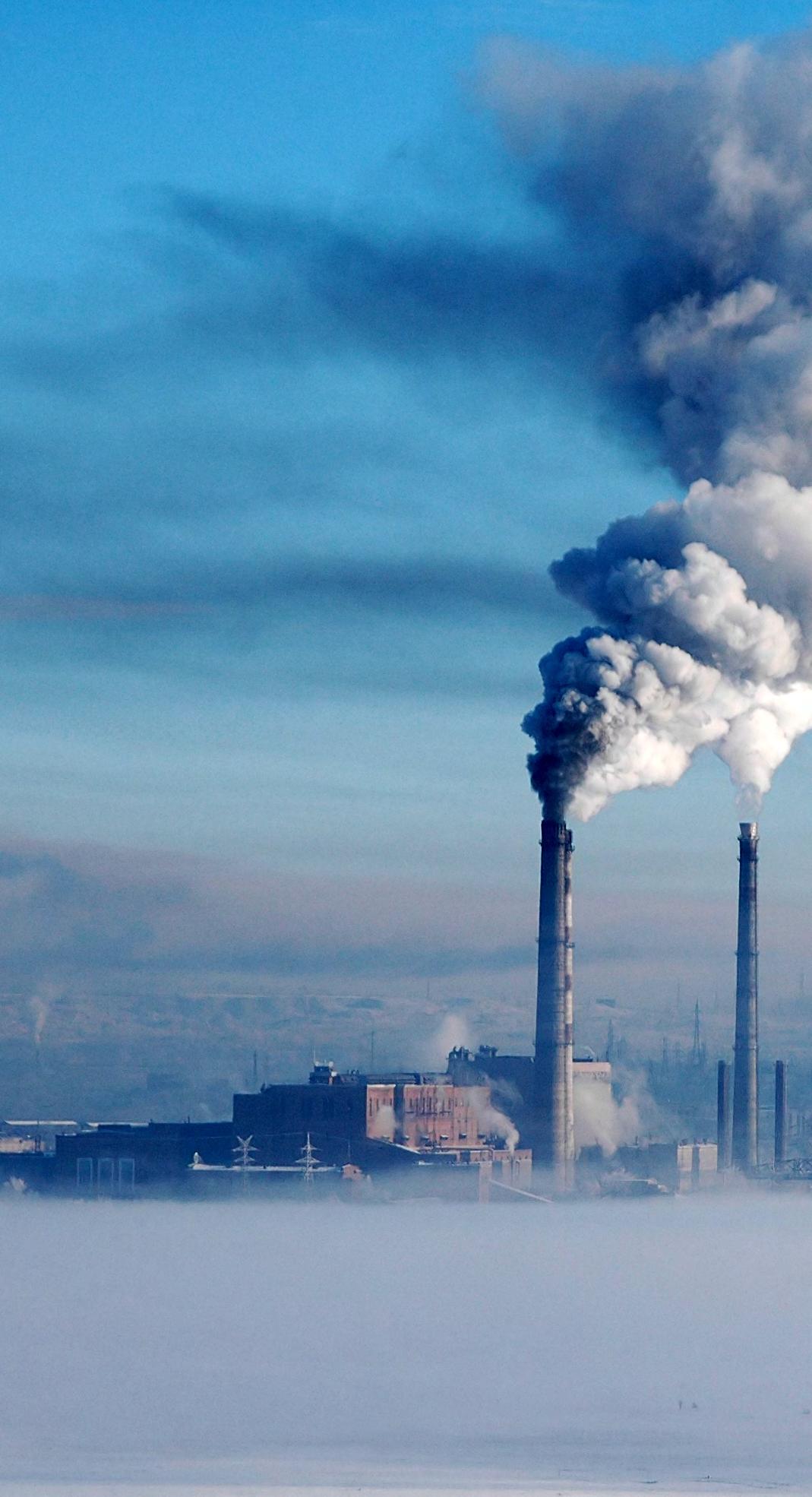
Egypt has been inking several agreements and Memoranda of Understanding (MoUs) for the production of green, blue hydrogen, and ammonia. In March, Egypt signed an MoU with Scatec to construct Egypt's first ammonia plant, to start production in 2025. According to Scatec, Egypt will export green ammonia to European and Asian markets.
In a meeting with Norway’s FM Huitfeldt in March, Egypt's Prime Minister Mostafa Madbouly stated that Egypt is determined to implement several massive green hydrogen projects with the aim become a regional hub for energy.
With the vision to become an energy hub, Egypt boosts its production of natural gas, as well as green hydrogen and ammonia to take part in the energy transition aspired by the globe. Therefore, Egypt is keen to boost its output and export natural gas and green energy to Europe and Asia.
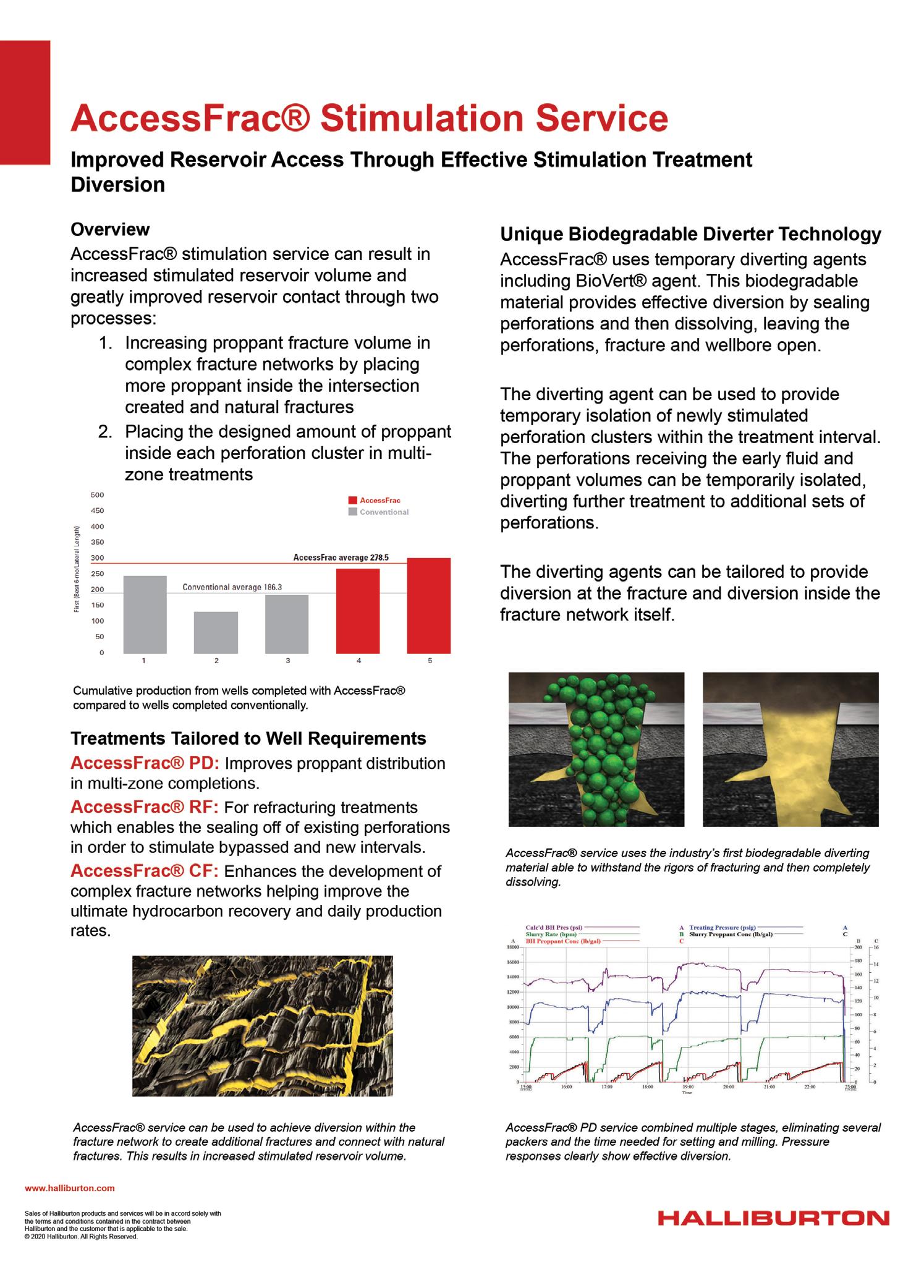
ADAPTING TO NEW OIL MARKET DYNAMICS
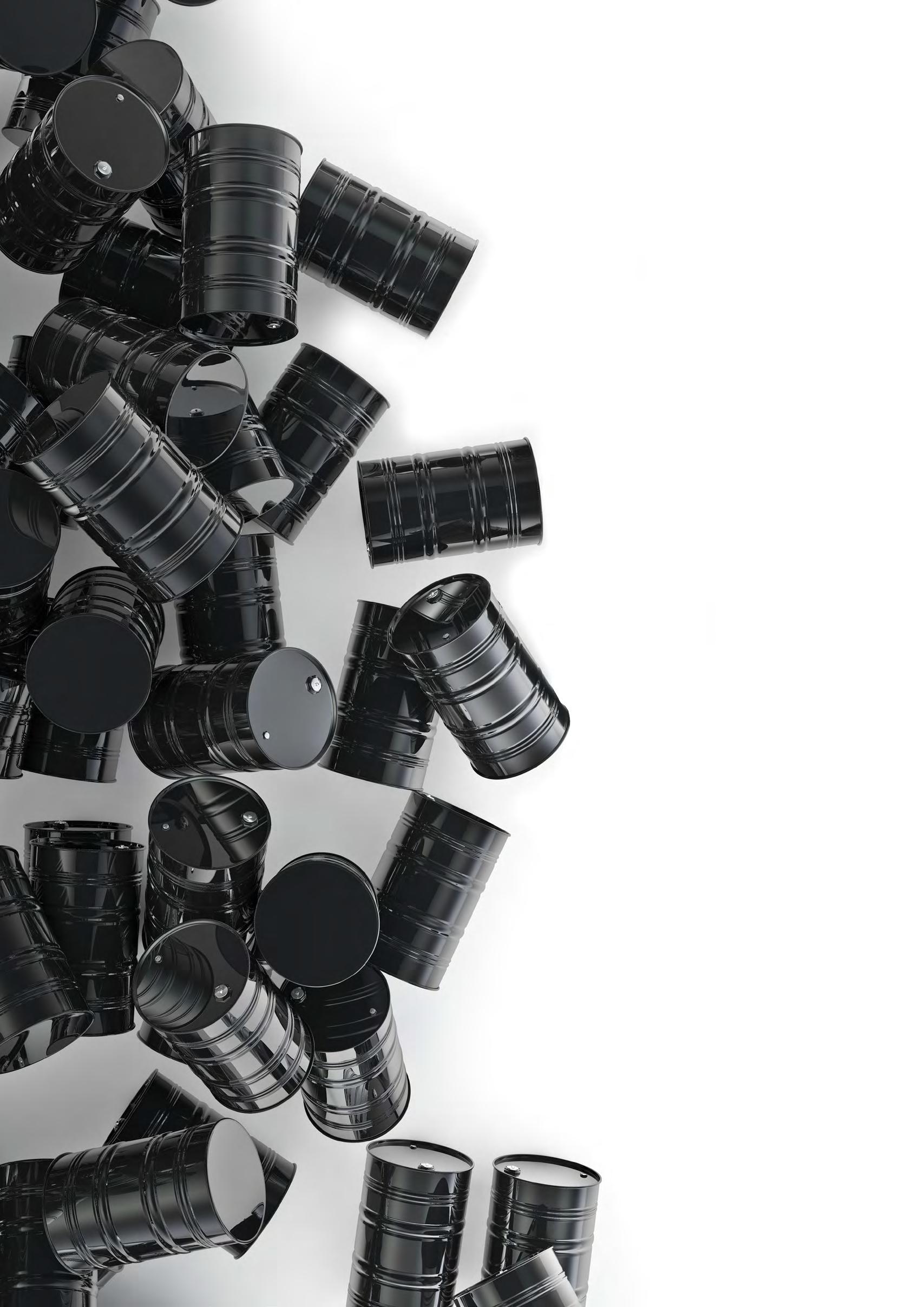 BY RANA AL KADY
BY RANA AL KADY
Have oil and gas companies finally been able to profit since the pandemic? The short answer: yes… but this does not come without a handful of complications. To begin with, it has become of high interest to know that, recently, major oil and gas corporations reported multi-billion figure earnings over the course of the 2nd quarter. Simultaneously, worldwide inflation has reached record levels over the course of the last half-century, and downturns are looming. The oil and gas sector's enormous profits are astonishing when juxtaposed with the many homes now having to pay for basic heat, conditioning, and nutritional demands.
GENERAL OVERVIEW
First of all, high energy prices are one of the primary causes propelling inflation in the United States to a four-decade high. As a matter of fact, even gas prices have declined marginally in recent weeks, but they currently average at just over USD 1 more than a year ago. Customers face increasing fuel prices not just at the pump. Rising energy prices are being included into transportation costs, raising the price of everything to affect everything we can put our hands on, even mere simple household items. One reason why fuel prices have been so high is that fewer refineries are functioning now in comparison to before the epidemic, limiting the amount of fuel that can be produced.
Natural gas and liquefied natural gas (LNG) prices have also risen as a result of Russia's intrusion of Ukraine and the imposed sanctions on Russia, one of the largest providers of natural gas. Various European countries have been considering other alternatives to Russian natural gas, fighting for boatloads of LNG, driving up natural gas costs internationally and in the United States.
Numerous developing nations, which are struggling financially, lacking access to capital, and failing to rebound from the Covid-19 outbreak, are on the verge of collapse. The world will expect to witness indications of a tsunami of financial, social, and political turmoil that will affect every nation. As mentioned by Haytham Mosilhy, Asset Integrity Administrator at Ganope, “The oil and gas sector is completely full of successes in the Egyptian state sector, in terms of the remarkable increase in the production of gas and oil and in terms of expansion. Also in the villages of Upper Egypt and the delivery of gas to a large number of them so far in the first stage despite the difficulties and challenges we face, but with patience and continuous effort all the impossible is achieved for our great country Egypt.”
FUTURE PLANS
As a result, it is evident that the recent successes of oil and gas companies, in terms of discoveries and profits, have led many to ask one very important question: ‘Where will all that revenue be spent?’ As oil and gas companies reap the profits and are just beginning to enjoy the fact that the losses from the pandemic have been compensated at last, they are being scrutinized on how much and where this money should be spent; and each sector seems to have conflicting opinions on the matter. Mosilhy also added that “the best way to invest and reap profits by saving energy and exploiting the production of natural gas in Egypt and exporting it to the countries most in need of gas, such as the Zohr field, as it provides 2.7 billion cubic feet of gas per day.”
In fact, while some claim that this money should be better invested in the oil and gas industry to be used as a safety net in the event of another global crisis or outbreak, others are quick to disagree by saying that these profits are better off invested in climate change actions. As a matter of fact, the giants can anticipate strong rising costs for raw resources, rig prices, and personnel, which may eat into part of the sector's marginally increased capital budgets. Nonetheless, companies are expediting sanctioned upstream plans and certain brownfield projects with short-return cycles, while increasing investment in renewables, hydrogen, as well as other carbonreduction programs. Making a profit comes with a duty, and that obligation is to keep investing in energy independence as well as the energy transition. Eventually, this will reduce society's reliance on the volatile nature of oil and gas.
To conclude, the rise in energy costs this year is due, in part, to years of lack of investment, which ensured that when demand rebounded from epidemic lockdowns, oil markets were extremely tight even prior to the disturbance created by the recent war.
NESR Performs successfully its 1st Hydraulic Fracturing Operation in Egypt
successfully pumped its first hydraulic fracturing job in Egypt by bringing fit for purpose equipment and technologies to the market, design & execution has exceeded client’s expectations.
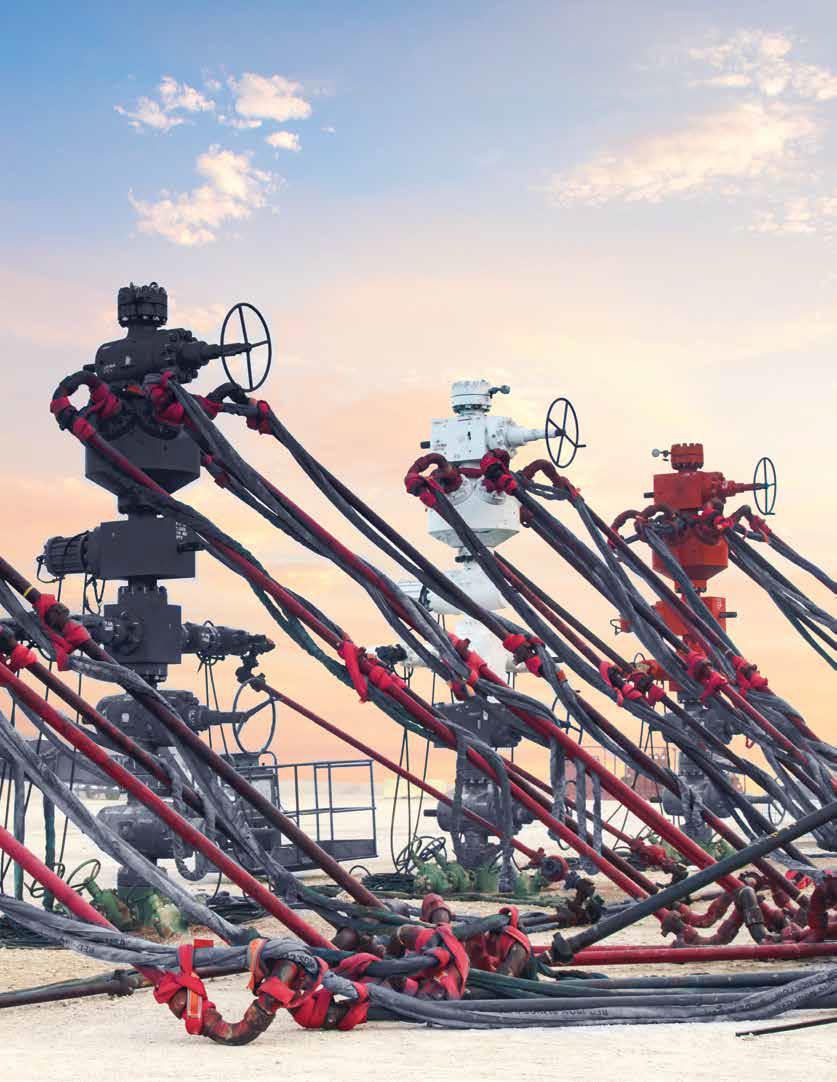
THE ECONOMICS OF EGYPT’S PETROLEUM PRODUCTION BOOM
Egypt’s vision of promoting itself as a regional energy trading hub is an initiative that is both inspirational and challenging, but no country with such an ambition can really establish its credentials in the global energy market without flexing the muscles of its own energy sector. Though rich with energy resources, most notably natural gas, Egypt’s role as a force within the energy market was not up to its full potential decades ago. But that reality is quickly changing with effective economic policies that have sought to boost production, not only to ensure that the needs of the local market are fully satisfied but to secure Egypt’s place in the global economy as an attractive source of energy supplies for export.
The government’s strategy relied on a number of different measures to ramp up production, most notably a substantial increase in exploration and production (E&P) activities. The government conducted a 3D seismic survey covering 329 square kilometers in the Mediterranean Sea at a cost of $35 million. This is in addition to future studies and surveys that are planned to be conducted in the Red Sea, with concessions in that region being put on the oil and gas exploration map for the first time.
Attracting international interest to the Egyptian market is a fundamental part of efforts to boost production, with one notable milestone being the launch of the Egyptian Upstream Gateway (EUG), which has successfully attracted up to ten international bid rounds, nine international bid rounds granted 39 oil and gas exploration with investments valued at $2.2 billion. Other reforms have ensured that the Egyptian energy market will be able to secure the necessary investments to finance more activities and attract more interest to all the promising assets that the country has to offer.

With a specific look at development throughout the past eight years, it is evident that the state’s reforms have brought about positive results with total petroleum production reaching 597 million tons, including 245 million tons of crude oil and condensates, 342 million tons natural gas, and 10 million tons of butane. The country also achieved its historically highest petroleum production rate in August 2019, reaching about 1.9 million barrels of oil equivalent per day (crude oil, gas, and condensates).
Notably, natural gas production has gone through the roof with the Zohr field producing up to 3.2 billion cubic feet per day (bcf/d), 1.1 bcf/d in Noroos, 0.35 bcf/d in Atoll, and 0.435 bcf/d in 9B Phase. Additionally, North Alex and West Delta’s production also contributed 5 trillion cubic feet of natural gas. In total, 48 natural gas field development projects have been added to the national production with investments of up to $33.4 billion.
With GDP representing one of the most important indicators of any economy, a general improvement in the contribution of the petroleum sector to the GDP can be witnessed throughout the decade (from fiscal year 2011/12 to 2020/21). Over a ten-year period, Egypt’s crude oil contribution to the GDP recorded an annual average of EGP 152.8 billion, with its growth rate soaring by 47%. In 2020/21, the country’s crude oil share in the GDP reached EGP 162.71 billion, whereas a decade ago in FY 2011/12 it was only EGP 110.62 billion. Between FYs 2011/12 and 2020/21, the contribution of crude oil in the GDP reached its highest point at EGP
242.75 billion during FY 2018/19. These trends coincide with the various measures taken by the Egyptian government to promote exploration activities and boost production, which have demonstrated significant success over the past decade.
When it comes to natural gas, it is also possible to observe the same trend with an increase in the contribution of natural gas to the GDP as the government carries out reforms to increase production. Between FYs 2011/12 and 2020/21, the annual average contribution of natural gas to the GDP was EGP 170.4 billion, where it reached its highest point at EGP 303.1 billion in FY 2018/19. Starting from EGP 145.04 billion in FY 2011/12, the contribution natural gas to the GDP ended up being 157.03 billion in 2020/21. In both the cases of natural gas and crude, FY 2018/19 stands out as the most productive year in terms of their role in boosting Egypt’s GDP. Performance was limited afterwards in 2020 due to the fallout of the global pandemic.
With specific focus on FY 2020/2021, crude oil contributed EGP 140.2 billion from the public sector, EGP 22.52 billion from the private sector, and hence EGP 162.7 billion from wholesale to the GDP. Natural gas contributions to the GDP included EGP 134 billion from the public sector, EGP 23.04 billion from the private sector, and hence EGP 157 billion from wholesale.
The financial impact of all these activities has been substantial, with the petroleum sector contributing to the State’s Public Treasury gaining up to EGP 77.4 billion in FY 2020/21. This represented a major breakthrough since back in FY 2016/17 there was a deficit of EGP 33 billion. It is also worth noting that the Egyptian petroleum sector has been a major source of investment attraction for the national economy with total investment costs over the past eight years amounting to EGP 1.2 trillion. As a result of the Ministry of Petroleum and Mineral Resources’ reforms and efforts to boost production, the sector’s exports increased to EGP 208 billion.
Promoting activities that contribute the country’s national income and the GDP is of utmost importance if the government’s economic reform program is to become effective in achieving the goals of building a selfsufficient, debt-free, and sustainable economy. With innovative minds exploring the endless possibilities of renewables and discoveries in the Red Sea region opening new opportunities to expand the energy market’s activities, the country is, for now, on the right course to achieving its goals in being a leading force in both energy production and climate action.

ARTIFICIAL LIFT TECHNOLOGIES: REMARKABLE TOOL FOR BOOSTING PRODUCTION
BY FATMA AHMEDIn the shadow of the global oil crisis and the high prices and demand, oil producers are scrambling for new and innovative technologies to increase production and overcome this challenge. Artificial lift is one of the most important methods used to withdraw oil from wells and its developed technologies help in increasing production.
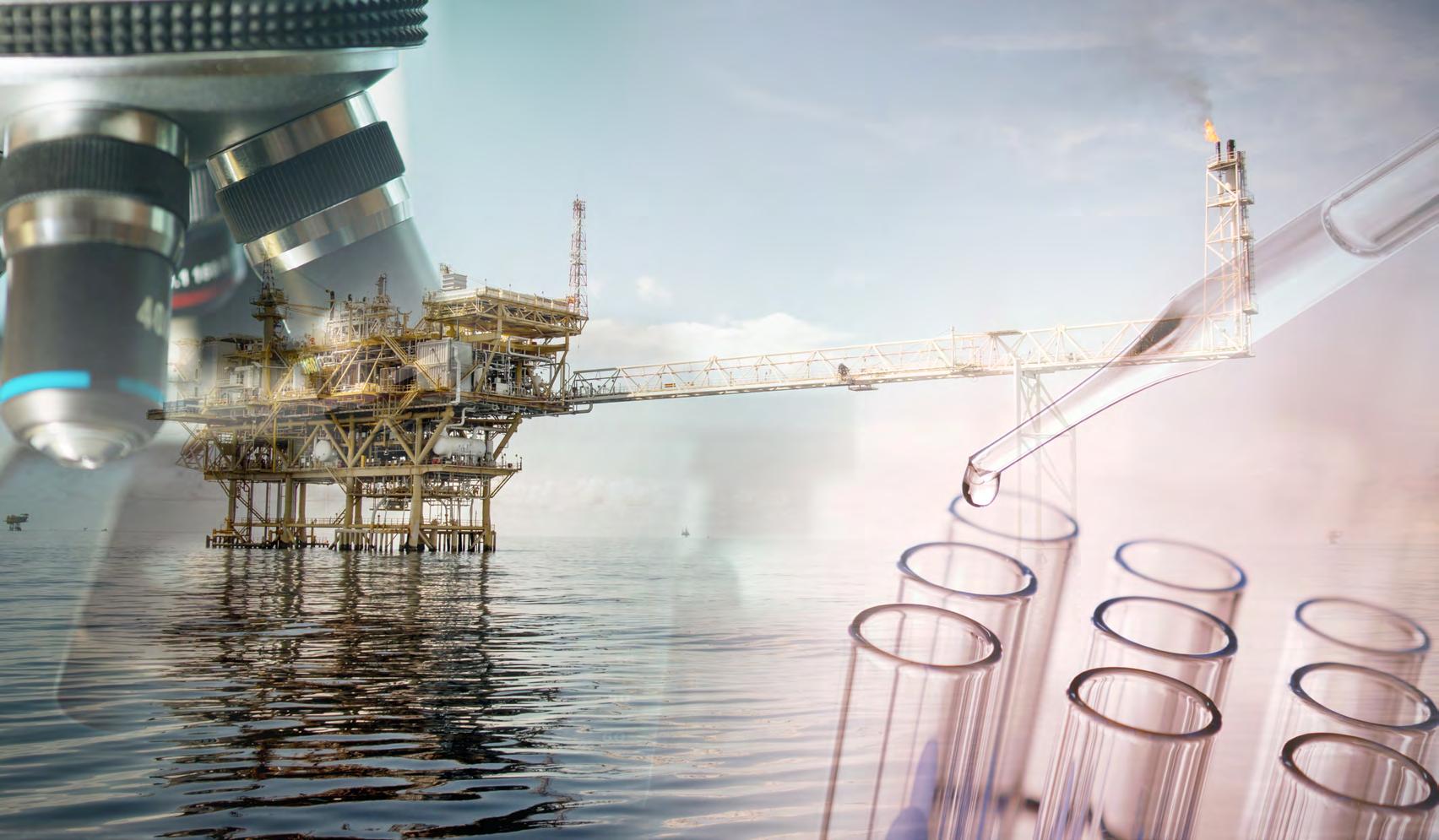
ARTIFICIAL LIFT TECHNIQUE
According to an article published by the E-education institute, artificial lift is an impact oil recovery (IOR) technology used to lift the fluids in the reservoir once they enter the well. In the early life of the well, the fluid can be pushed up the well to the surface easily due to the great enough natural pressure. This process is known as natural lift. The article stated that when the pressure is reduced from the reservoir because of the oil and gas withdrawal, the reservoir will not be able to push up the fluids. At this stage, the operators can resort to artificial lift technology to keep the well's flow as well as increase production. Studies have found that 50% of the wells in the world need an artificial lift. By increasing pressure, this technology helps to push up the oil from the well using either mechanical or technical devices. To summarize, the aims of artificial lifts include increasing production, increasing reservoir pressure, and extending the production life of the well.
There are several artificial lift methods in the oil industry. An article published by the Journal of Petroleum Technology (JPT) explained that the used method is selected according to four main considerations. These considerations are technical characteristics that involve surface and infrastructure, drilling, reservoir, geological, geophysical, and economic considerations.
ARTIFICIAL LIFT METHODS
The Electrical Submersible Pump (ESP) is more suitable for wells with low bottom hole pressure (BHP), low gas/oil ratios, low bubble point, high water cut, or low API gravity fluids. An article published by Estis compression mentioned that the main schematic of this technique involves a motor coupled to a pump body that is hermetically sealed. The entire unit is submerged in the oil, connected to power supplies and operator controls via a series of submersible cables.
The Hydraulic Lift is another method used to increase production through a surface pump that put pressure on the well fluid. It consists of the surface high-pressure injection pump and pipeline, injection tubing, downhole assembly, and positive displace or jet pump. The hydraulic lift well has its wellhead connected to the power fluid manifold.
The Rod Lift is another popular artificial lift method. It can drill deeply to produce from wells with low bottom hole flowing pressures and it is suitable
for very low pump intake pressures. So this method is desirable during the last stage of production. This method provides high system efficiency, positive displacement, optimized controls, and flexibility.
The Plunger lift is used in low-volume wells with production rates that are around 200 barrels per day (b/d). This method works by creating differential pressure so it can push up the fluids. This method is cost-effective. According to the article published in "what is piping," this type of lift monitors the valve opening and fluid lifting. So when the tubing is closed, the fluids flow stops then the plunger goes down to the bottom of the well and liquid accumulates on top.
The Gas Lift method is pushing the product to the surface by injecting gas into the reservoir. It is suitable for low productivity, high-gas/oil ratio wells, or deviated wellbores.
The Jet Pump is a low-cost method compared to other methods. According to an article published by "The Way Ahead", as the volume, size, depth, and deviation of producing wells continue to increase, the jet pump installations continue to increase too. It is a very successful method for depths ranging from 500 feet to 19,000 feet and production rates varying from less than 100 b/d to 20,000 b/d.
TECHNOLOGICAL APPLICATIONS
Start Us Insights has presented five top artificial lift solutions that positively affect the oil and gas industry, after analyzing 84 different solutions. First is Valiant's ESP solutions, which enable operators to achieve production targets safely and efficiently. Second is Gelois' Electro Centrifugal pumping, which provided a positive displacement pump, handling temperatures up to 120 degrees centigrade, and oil density greater than 8 API, the American Petroleum Institute’s crude density index. Third is UPwing Energy's permanent magnet, which is installed in the subsurface compressor system allowing for an increase in natural gas production and keeping the motor system isolated from the downhole environment. Fourth, Well Sense developed the gas lift method by using fiber optic sensing. Fifth is rod pump solutions, which are developed by ChampionX. These solutions have separators to protect them from gas and high-solid particles in the downhole environment. All of that is good evidence of the importance of applying new technologies and their key role to increase oil and gas production.
IN EGYPT”
MARINE GROUP is a ONE-STOP service provider to our clients in Egypt through

following
companies:
Pan Marine Shipping
Marine
customers are our greatest asset;
them with a one-stop service
economical
needs, solving their
aim
being
OFFSHORE SERVICES excels in the provision of diverse services and solutions for key o shore-support needs, including platform supply, emergency response and rescue, anchor handling tug supply, walk to work, crew transfer and subsea support. In addition, Vroon O shore Services o ers a wide range of complementary o shore services.

a versatile eet and highly quali ed and experienced colleagues, we are committed to providing seagoing transportation services and engineering & support solutions that are reliable, sustainable, cost e ective and enable our customers to be successful.

NEW LEGISLATIONS FOR COMPETENCY DEVELOPMENT OF LABOR IN ENERGY SECTOR
TECHNICAL COMPETENCY DEVELOPMENT IS THE KEY TO PROGRESS IN ENERGY PRODUCTION INSTITUTIONS
 By Eng. Mohsen Ahmed Farhan Ali - Oil & Gas Well Drilling Specialist - Kuwait Oil Company (KOC) Consultant - Oil & Gas Industry Trainer & Coach
By Eng. Mohsen Ahmed Farhan Ali - Oil & Gas Well Drilling Specialist - Kuwait Oil Company (KOC) Consultant - Oil & Gas Industry Trainer & Coach
Competent labor is the most important factor in the success of global energy production institutions, and has to be considered one of the most important fixed assets that determine the economic value of companies and institutions around the world. Therefore, preparing a competent and well-trained workforce team has a top priority for the leaders of major energy production institutions worldwide. Since the importance of competency development is a great issue and has a valuable economic return, as the human workforce competency will ensure the application of the highest standards of quality inside well-reputed organizations, as well as reduce incidents that harm individuals and the environment alike. This developed competency will also lead to rationalization of spending and maximizing the profits of energy production projects.
Competency development concept and application need to be supported by new legislations to push and motivate the different institutions, especially energy production companies and corporations, to create new regulations for competency development and directing suitable fund of their budgets for that target achievement through different training sessions, talented people discovering and human development programs implementation. In parallel, the candidate’s selection tools for leadership levels have to be developed and updated based on regulated/strict competency assessment criteria and their performance should be under evaluation according to clear and actual Key Performance Indicators (KPIs).
Competency development is a continuous, integrated, and complicated process that needs cooperation between different technical and administrative teams in a well-defined system, announced targets, and clear assessment criteria to yield new competent personnel, well qualified, able to hit the strategic targets of their institutions and make different performance in a more smart and safer way.
Competency development need to be set as a strategy for the country which looking forward to improving its economy and life quality as it can be used as a tool for economic development in two ways, 1. competent professionalism will raise profits and enhance the economic outcome of all institutions in these countries generally and 2. competent workforce can be used as a final product of competency development continuous process in order to export this human power to other countries in need for utilizing competent personnel for building their economies and developing their natural resources.
Some countries created clear visions for implementing well-planned competency development programs for producing a new generation of competent technical and managerial professionals to use as experts in different fields, especially for education and health development issues. The most successful countries in applying this vision are Singapore and Malaysia. Other countries, like India and China, use the competent professionals for exporting manpower abroad to find career opportunities which would make good economic income for them and their countries alike.
Competency development regulations, programs and evaluation criteria need to be included in the legislative agenda of the concerned legislation councils/ authorities on a regular basis for updating the same to be compatible with the quick huge changes worldwide in technological sciences and new application in the most life fields. This concept of competency has had a great effect on economic progress and we can consider it as a warranty certificate for life quality in any country. Some countries’ economies experience severe decline as a result of non-competent personnel occupying effective positions due to unprofessional selection mechanisms which represent the truly ugly side of corruption.
As support for competency development and well employment for all competent/ talented staff, we will be in need for setting-up clear Key Performance Indicators (KPIs) unit to create those KPIs for each proficiency level. On the other hand, for the leadership levels there is a dire need for applying that system for competency development and performance level measurement for assuring quality, progress, and development of any enterprise.
For summarizing that principal and conceptual ideas about competency development and key performance indicators, we can use the following tips: (1) competency assurance, development and measurement is a must for continuous success of any enterprise, (2) KPIs have to be well-defined for accurate performance evaluation based on the organizational targets, (3) the proficiency levels determination by concept of competencies and sub-competencies is extremely important for upgrading all staff members then they can go up in leadership ladder, (4) the leadership/managerial level candidates should be determined according to very selective system strictly based on competencies, skills, and merit
Finally, I need to say we need to invest more money and effort to set-up an institution or enterprise and it may not last or fall-down due to many reasons but the common reason for enterprises failure or vanishing is non-competent performance and heterogeneous behavior of the work team and team leaders in the most circumstances.

IN EUROPEAN-RUSSIAN ENERGY CONFLICT, NOTHING BURNS LIKE THE COLD
BY IHAB SHAARAWYE
urope is bracing for the unknown in the coming winter. Regardless of the low-temperature forecasts, the Russian threats to halt energy supplies may let Europeans freeze.
Since the beginning of its “military operation” in Ukraine in February, Russia has tried to make the gas supply to Europe as unpredictable as possible to dent EU resolve on sanctions and their military and economic support to Ukraine.
At the end of July, Russia reduced gas flows to Europe via the Nord Stream 1 pipeline to 20% capacity. Further restrictions in supply are likely, creating uncertainty around the region's outlook and resulting in energy shortages and high prices that are expected to cause an economic downturn in Europe this winter.
The most serious threat has recently come from Russian President Vladimir Putin, personally, as he told business leaders in Vladivostok on September 7 that Russia could yet decide to rip up existing supply contracts. Putin’s remarks came in response to EU proposals to implement price caps on Russian energy imports.
Putin's threats left European leaders with no illusions about the Russian intention to weaponize energy supplies, especially at a time when Ukrainian troops are advancing on different fronts.
The European leaders are scrambling to formulate the right hedging plans, while traders and observers are putting their new outlooks for an energy market; where Europeans will seek an alternative to Russian energy and Russia will seek new clients for its oil and gas activities.
EUROPEAN HEDGING PLANS
High energy prices are already threatening to cause a recession this winter through record inflation, with consumers having less to spend as costs for food and fuel are rising. A complete cutoff of Russian supplies could deal a heavier blow to an already troubled economy.

Besides heating homes and generating electricity, gas is used to fuel a range of industries that most people never think much about — from forging steel for car manufactiring, making glass bottles, to pasteurizing milk.
Although the EU has already called upon its members to voluntarily reduce their gas consumption by 15% in the fall and winter, that might not be enough to face Putin’s threats as European countries used to get 40% of their total gas needs by pipeline from Russia.
Following Putin’s remarks, European Commission President Ursula von der Leyen described the situation facing Europe as extraordinary, accusing Russia of being an unreliable supplier that manipulates European energy markets.
She said the Commission would put forward immediate measures to help consumers, including a mandatory target for reducing electricity use at peak hours, a cap on revenues of companies producing electricity with low costs, and other plans to share the burden of energy price rises.
Several European governments have already announced measures to protect citizens from rising energy bills. In the meantime, Western nations are trying to put pressure on Russia’s energy revenues, which funds the war on Ukraine, by proposing price caps on Russian oil and gas.
Governments in Europe, reportedly, have earmarked nearly 500 billion euros in the last year to cushion citizens and companies from soaring gas and power prices.
Although many of these measures were designed to be temporary, many observers see the state intervention as becoming structural.
Since the halt of Nord stream supplies in July, several European officials have expressed confidence that they can endure winter with limited Russian energy.
As Russian gas flows were running at severely reduced levels, Germany was pressing to secure liquefied natural gas contracts with Gulf producers and other European states outlined measures to conserve energy. Berlin is also ramping up the number of LNG terminals it is building. Spain, France, and other European countries also outlined contingency planning to try to avoid power cuts.
The increased LNG imports and rationing of gas consumption have helped European gas storage to reach 85.6% full. However, many observers expect that some countries to be unable to meet their gas needs this winter, while other countries will be forced to implement industrial rationing.
Many observers believe that it will not be a problem for one winter. Efforts to replace Russian gas with other pipelines and LNG have yielded some results but cannot go much further in the short term given the limited availability of global LNG supplies and regional regasification terminals.
Transitioning away from Russia as an energy source and towards LNG and renewables will take time, while a revival of coal-fired power in some countries will mean a temporary setback to emissions reduction. Hence, the winter of 2023/24 is likely to be challenging too.
GAS WEAPONS WILL BACKFIRE
Russians think of oil and gas as a decisive weapon in the Russia-Ukraine conflict during winter. However, the weapon can backfire.
In case of cutting energy supplies to Europe, Russia will be deprived of important financial resources and while finding alternative energy resources is challenging for Europe, also finding new markets for their oil and gas will be challenging for Russia.
Commenting on the actions of “unfriendly states,” the Russian President insisted on the need to draw up plans with oil and gas companies for expanding the export infrastructure to countries in Africa, Latin America, and the Asia-Pacific region.
After the beginning of the conflict in Ukraine, Russia had fewer buyers for its Urals crude oil, with some foreign governments and companies deciding to shun its energy exports, and its price started to fall.
It was a great chance for Asian buyers such as China and India to increase their exports from Russia with big discounts.
Russian Urals oil has always been a grade for Europe. Taking it to new markets away from Europe will depend mainly on ships which will add costs of transport, insurance, and timing. It will also depend on the well of these countries to go against sanctions imposed on Russia by the West.
Many experts see that re-routing oil from Europe will be a tough task, as Russian oil ports have limited export capacity. And even these favorable terms Moscow is offering will not convince India and China to buy much more Russian crude as they have several long-term contracts with other producers.
Re-routing gas exports represents a bigger challenge than oil as it heavily depends on pipelines. Still, developing new pipelines that can take Russian gas to new destinations needs a long time and has many complications. Hence, the coming winter may be also cruel for Russia too.
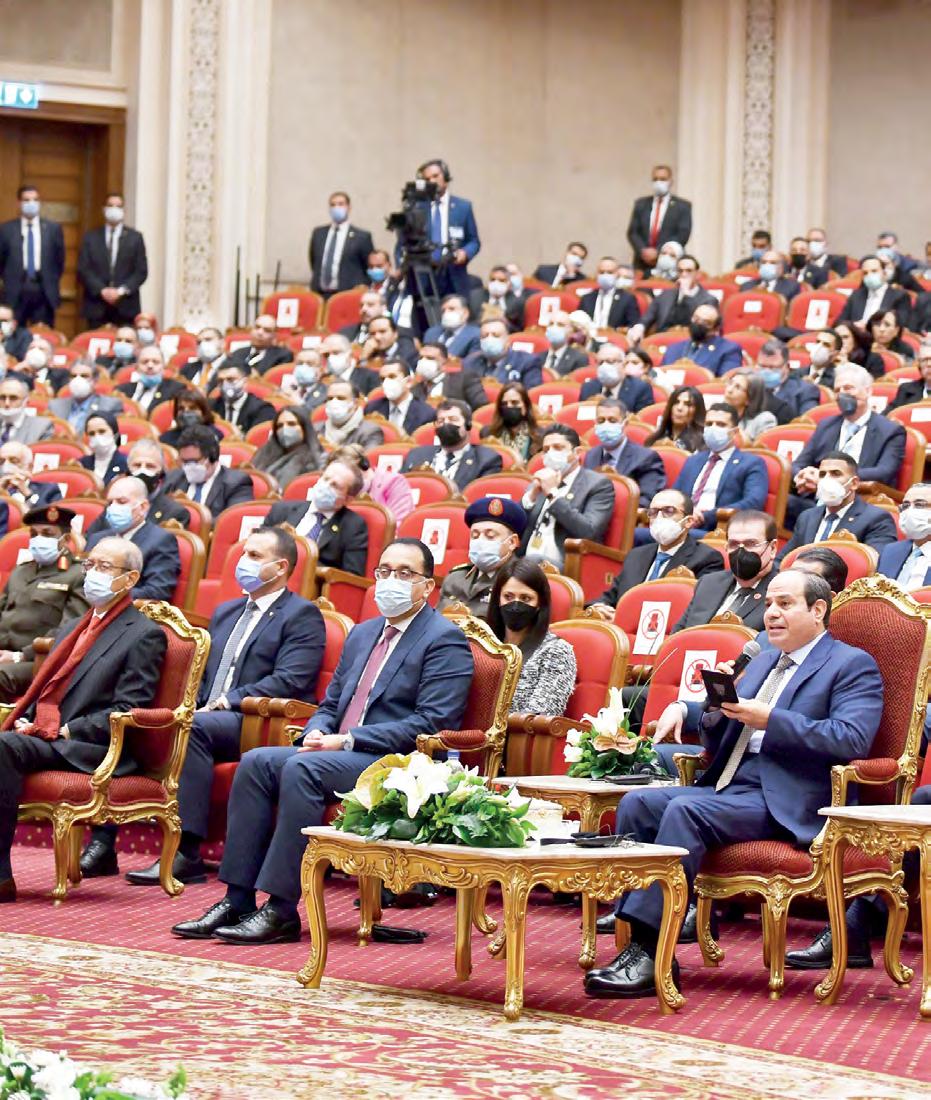





EXPLORING THE POTENTIAL OF EGYPT’S RICH PETROLEUM GEOLOGY
EGYPT'S DREAM OF EXPLORING RED SEA PETROLEUM

One of the most important things I start with when I am requested to do an assessment of the petroleum potentiality of an area is to review its exploration history and the data acquisition programs.

Egypt’s petroleum provinces are rich with an enormous amount of data. For example, the acquisition and processing of seismic data over the past seven decades accumulated a big petroleum database. Till now, there are about 11,800 exploratory wells that have been drilled and over 1300 fields discovered in Egypt. The main hydrocarbon producing regions are the Gulf of Suez, Nile Delta/Mediterranean, and the Western Desert. The principal reservoirs in the Gulf of Suez are clastic and are represented by the Cretaceous Nubia sandstone reservoirs, and the Miocene Kareem, Rudeis and Nukhul Formations. Carbonate reservoirs are also important and can be found in the Miocene and Pliocene successions. Cap rocks are abundant in the Cretaceous and Miocene sections and consist of shales, tight limestones and evaporites, the main source rocks are Thebes, Brown Limestone and the black shales and within the Belayim, Kareem and Rudeis formations in the Miocene successions.
In the Nile Delta, the main producing intervals are the sands of the Miocene Abu Madi and Sidi Salim, Pliocene Kafr El Sheikh and Wastani Formations. Reservoirs in the Western Desert include both clastics and carbonates, which can be found within the Cretaceous and Jurassic successions. Source rocks, both oil and gas prone, are found in the Cretaceous and Jurassic Khatatba and Masajid Formations.
However, there are minor oil discoveries in Lower Cretaceous sandstone reservoirs in Upper Egypt. This province does not receive the required exploratory interest due to the poorly defined Komombo basin and the lack of subsurface data. Based on the interpretation of the entire seismic data package that was acquired in this area, I believe that these minor oil discoveries of Al Baraka and west Al Baraka oil fields are charged with oil from Early Cretaceous source rock. This source rock was deposited in the depocenters of the intra-continental rift crossing the Nile valley in Upper Egypt. This Upper Egypt Rift displays about 260 km long in a NW-SE direction and 80 to 100 km wide. It comprises three sedimentary half grabens, from southeast to northwest: Kharit, Nuqra, and Komombo basins. They are filled with thick (ca. 3,700 m) continental to open marine Neocomian-Campanian/Maastrichtian sediments.
I also believe that the understanding and defining of this rift system will open an additional petroleum province in Egypt. This is supported by the proven working petroleum system in the producing fields in Upper Egypt. The Egyptian Red Sea is a huge frontier basin that covers about 66,000 km2 and has only 15 exploratory wells. The legacy seismic data is mostly of poor quality and insufficient for deep imaging and pre-salt signal recording.
Regional studies indicate that the Egyptian Red Sea has all the elements of a hydrocarbon system (source, reservoirs, trap, and seal) and suggest two different hydrocarbon plays: a deeper play in pre-rift Cretaceous structures and a shallower play in syn-rift Miocene sequences.
Since Egypt started its journey of exploration and extraction of oil, it has not gone to the Red Sea but only to the Gulf of Suez. The Gulf of Suez Petroleum Company (GUPCO) has been established for the extraction of oil from the Gulf of Suez and its production has reached 600,000 barrels per day, equivalent to Egypt's daily production now of crude oil, and the Gulf of Suez still has not revealed everything inside it until today.
After the demarcation agreement between Egypt and the Kingdom of Saudi Arabia, Egypt was permitted to conduct oil and gas exploration and extraction activities in its territorial waters in the Red Sea. After Egypt was extracting oil from the Gulf of Suez only, it was granted rights to conduct exploration in the Red Sea.
From here, the dream started, and the Ministry of Petroleum made the decision to conduct a seismic survey of a large area of the Red Sea, which it divided into ten sectors with an area of more than 30,000 square kilometers. The cost of this seismic survey was $750 million and when it finished the seismic survey, the Ministry of Petroleum put forward a global tender in which four international companies won three blocks out of ten blocks and drilling will begin in 2023. So do we wait until this day to achieve the dream or is there something else and another way of thinking outside the box to choose an area where the chances of success to find an oil reservoir is high?
I think if we could select a small area as a pilot and use our geologists’ experience to drill and announce that the Red Sea is the best place to invest in and at this moment our dream will be achieved. The exploration and production of oil from the Gulf of Suez region continued for many years, with an output of millions of barrels.
The dream now is that in a few months or years other companies will start to explore and produce crude oil and natural gas from the new and promising region, which is the Red Sea region. If the planned drilling in 2023 at the three agreed blocks is complete, this should encourage other international companies to invest in this area. If one of these blocks achieved commercial oil or gas discovery, you will find many rigs starting drilling and there will be more investments in the other seven blocks. I hope that this dream is not delayed and next year oil production from the Red Sea region will start.
SABRY EL SHARKAWY
Head of the Petroleum and Mining Division of the Egyptian Syndicate of Engineers.
